
Chronic and Iconic | Pg. 06 HMS Unicorn - A Historic Treasure | Pg. 44 ‘Woke transphobia’ | Pg. 48 Bitter Pills to Swallow, a story of chronic illness. Spring 2023 Issue Discover HMS Unicorn, the oldest ship in Scotland. How TERF ideology affects the law in Scotland. the magdalen for students, by students Issue 99 The Magdalen Magazine
@themagdalenmag The Magdalen Magazine Join our team! If you're a UoD or Abertay student and have a passion for design or writing, we’d love to hear from you! The Magdalen Magazine @themagdalenmag www.themagdalen.co.uk with us online! Connect
I know I say this constantly, but where has the year actually gone? Issue 99? My fifth as Editor-in-Chief? What do you mean I’ve only got one more?! How will I cope without the DUSA Media Office to do all my uni work in?! ...and the Mag work, of course. That too.


I hope you’ve all been getting through the second semester with minimal bumps and grazes. It’s certainly not easy, especially at this point in the year as we start to approach those final deadlines, but if you were looking for a sign to keep going, this is it: you can do it!
The theme for this issue is “penultimate”. As I’m sure you know, 99 is the number before 100 (I got a qualification in Advanced Higher Maths to tell you that). And that means our next issue will be our historic, highly anticipated 100th issue. Excited? Me too! Still, let’s not get too ahead of ourselves – there's a whole load of quality work from our incredible team for you right here. Hope you enjoy!
Messages from the Senior Team
Hey guys, so excited about the new season and the new issue 99! We are really excited about not being absolutely freezing all the time! We want to say a special think you for the stunning illustration done by D. Pryke Thomas it's so beautiful and we absolutely love it !!!
And a thank you to all our designers who worked really hard to make this issue be possible. You all did a fantastic job, and we really appreciate the work you do on each and every issue. As we are cooling down from this issue, we are also so excited for the 100th issue as we are planning on making it our biggest and best issue yet and want to celebrate not only with the ball but with a special cupcake day for our creatives!!
See more info in the back xxx
- Katy & Fiona ❤
- Dani ✨
Arts & Entertainment Are the Oscars scared of Horror? The Inspiring Comeback Perpetually Waiting for a Sequel Review: The Banshees of Inisherin 10 12 14 16 Feature Chronic and Iconic: Bitter Pills to Swallow 06 Creative Writing Penultimate Under Poseidon's Skin the entertainers How We Make It After Happy Men Don't Lie in Streets 18 20 21 22 23 24
Table of Contents
Current
The Voice of the Iranian People Gender Recognition and Section 35 Levelling Up or Crashing Down? The German Coup Plot of December 2022 Labour's Self-Service Social Safety Net The Spark of Conflict Reignited 26 28 29 30 31 32 The Magdalen's advice column. Got a Question? Ask us! DUSAsk 34 Ukrainian Society Society Spotlight 36 Lifestyle 38 40 Five More Minutes... Twirl in 'Balletcore' Opinions Woke Transphobia You Can't Afford the Future In Defence of Childishness The Uncanny Arrival of 'Creative' AI Reclaiming Alone Time 48 50 52 54 56 Science & Technology How Close Are We to Eradicating HIV? Long Forgotten: The Secrets of Roman Concrete The Long History of Mental Health The X-Chromosome Files A Chilling Revolution: The Age of Cyro EM! 58 60 62 64 65 On/Off
On The Town HMS Unicorn: A Historic Treasure Right Place, Too Much Time 42 44 46
Affairs
Campus
and
Bitter Pills to Swallow

Feature Words: Roshni Baillie 06
During my first week at university, I decided to get a head start on my reading in one of the beautiful gardens on campus. Halfway through chapter four of Dracula, I found myself semi-conscious on the grass and one of my flatmates had to come and help me get back to our flat safely. A few years before, my aunt, Janet, collapsed in the staff bathrooms at the University of Manchester and couldn’t get up. Around an hour later someone found her. Chronic illness runs in my family, Janet has chronic fatigue syndrome, my mum rheumatoid arthritis, and I have endometriosis. Living with a condition that impacts your dayto-day life, and that cannot be stopped, is very tricky. Getting recognition of these invisible conditions is particularly hard, despite the fact that they’re not uncommon at all: around twenty-six million people in England suffer from at least one long term condition.
about [her] condition, as most of them have no education on ME and assume it’s psychological. At some point, [she] asked for help from a GP and he referred [her] to the nearest ME/CFS service in Sheffield. This ‘service’ offered no medical diagnosis or treatment and wouldn’t even help with benefits claims.”. She was eager to get something solid down on paper to show her employers that she really wanted to recover, but she turned up to courses for living with ME just to find out that it was ‘psychological treatment’, that classed ME as hypochondria, which would be jotted down on her medical records.
I spent hours in doctor’s offices answering questions, getting prodded and poked, being told to swallow whatever pills might make the unbearable pain go away. Nothing worked. After I finally convinced my GP that I wasn’t pregnant, I didn’t have any nasty STIs and that my tolerance for gluten was in-fact totally fine (I had to cut out pasta and bread, it was the worst fortnight of my life), she said that she was stumped. So, I started doing some Googling and found articles and blogs with symptom descriptions that matched my own.
Janet found that her experience with autoimmune disease highlighted this, as they disproportionately affect women. “MS [multiple sclerosis] was called ‘hysterical paralysis until the advent of the CAT scanner, and was ‘treated’ by psychiatrists until the 1960’s. The battle to have the PACE trial discredited took enormous amounts of energy from a patient group who didn’t have energy to spare.
Endometriosis effects around 10% of women globally, yet I had to jump through hoop after hoop to get listened to, and, after having my pain and feelings brushed aside for the better part of a year, my doctor caved and gave me medications that would help me get by. Many chronically ill people, unfortunately, have a similar experience when getting diagnosed. My aunt (Janet) went through a similar process when trying to get a diagnosis for myalgic encephalomyelitis (ME). She said that she has “learned over the years not to visit GPs
Feature 07
Design: Katy Blair
“The difficulty in getting a diagnosis is partially due to the sexism that still exists in health care.”
People with ME are still being discredited by some of the PACE authors like Simon Wesselly, Michael Sharpe and Trudy Chalder, who describe us as ‘activists’ and luddites, who just won’t accept the science.”. With chronic illnesses, as well as women’s health issues, there are too few specialists, and research isn’t being done to find something that will help, if not cure.
seizing up, face masks with cold gel beads for migraines, an Apple Watch to track heart rates, do ECGs, check oxygen and track medication, compression leggings to keep their blood “movin’ and groovin’”, over-ear headphones to block out sounds as their fibromyalgia causes heightened sensations, and a slew of pain killers. These are all things that Vee has said they often forget aren’t required by most people to have a semi-normal life: they’re just things to help them get through the day.
I take anti-inflammatory medications and codeine three times a day, as well as some classic paracetamol and norethisterone when I have big plans, and these have somewhat improved my quality of life. But, I still end up feeling sick, tired, confused, dizzy, and many more horrible things whenever I have to take the meds. Plus, they’re not one-hundred percent effective and I usually have to stay in bed anyway for fear of putting myself in a dangerous situation. Such as, in December of 2021, when my side effects mixed with intense pain were so bad that I threw up and fainted outside of The Body Shop (I also knocked a display over on my way out of the shop. So to whichever poor employee had to pick it all up, I’m so sorry).
Along with cancelling plans to stay home despite taking enough meds to fill a maraca,
My friend, Vee Marston, puts my short list of medications to shame. They have fibromyalgia which causes pain throughout their body, fatigue and insomnia. They said, “I take a nerve blocker which helps me basically get out of bed and function. I also take a medication to ease the nausea that comes along with both taking the nerve blocker and having the condition that I have, and I take a beta blocker which helps keep my heart problems in check. I also take supplements depending on what time of year it is and what thing I’m deficient in... but sometimes they’re gummies and that makes me feel better.”. This comes along with a foldup walking stick and a ‘fancy’ acrylic stick from Neo-Walk to help them get around, as well as stick on heat pads to help ease any join pain in specific spots, a rollator which allows them to walk faster (“I am a homosexual, I must walk fast!”) and avoid developing a limp from the stick or having to lean on a stick with sore joints, knee supports to help with stability, compression gloves to stop their fingers
Janet, however, has said that she found that the hardest thing to do was, “to accept that increasingly large chunks of my life – and who I was – had to be left behind. This process takes years of fighting, mourning, trying to bargain with life to leave me something of who I was, until finally coming to the realisation that it’s better to have a minimal life and feel well than to try to cling on to things that you just can’t have.”. She loved walks with the dog, kayaking, working, teaching, and, still is, a fantastic artist. It’s hard to live feeling that your body hates you, and pushing aside the things that you took for granted for so long, because an illness won’t let you do them, feels like part of you is dying and will never come back. The realisation that this is not something that will simply go away with some time and some Calpol is a bitter pill to swallow.
Feature Words: Roshni Baillie 08
“there are things that chronically ill people have to give up for good. I’m fortunate enough to not have my condition impact me every single day,”

Feature 09 Design: Katy Blair
Are the Oscars scared of Horror?
2022 was nothing short of a monumental year for the horror film. Critical reception was nothing but praise for the genre, with the year seeing career defining performances in horror from stars such as Mia Goth and Keke Palmer respectively, in the extremely highly received films Pearl (2022) and Nope (2022). If this is all considered, it leads to the questions that are whispered across both critics’ and fans’ lips, why are horror performance always snubbed during award seasons, specifically by the Academy Awards? Despite having films packed full of amazing acting, cinematography and direction, the Academy consistently overlooks horror, belittling it as a whole in comparison to other genres.
Horror going widely unrecognised during award seasons is not a new trend and can be seen through the history of the Oscars. In the span of 94 years, only six horror films, The Exorcist (1973), Jaws (1975), The Silence of the Lambs (1991), The Sixth Sense (1999), Black Swan (2010), and Get Out (2017), have ever been nominated. Only one of these films, The Silence of the Lambs, won the prestigious award. The lack of respect for horror movies has existed as long as the Hollywood award system has, yet it is now 2023, where claims of championing inclusivity and unique visions are made regarding film, so why is horror still being overlooked?
When we consider horror’s place in the world of Hollywood studios, it can’t be regarded as anything other than important. For example, in the 1970’s we saw horror pave the way for the age of the blockbuster, with Stephen Spielberg’s Jaws considered one of the first ‘summer’ blockbusters. Looking back at horror, the genre consistently cemented itself as a huge draw to audiences, continuing to bring in fans both new and old to both cinema going and at home streaming.
One problem continually seen when considering horror and its relationship to awards is where to draw the line at defining what is a ‘horror movie’, so to speak. Often belittled to the worst representation of the genre, the C-list slasher flicks full of bad jump scares and not-so-realistic gore, which despite often being a fun and entertaining watch, obviously lack the best picture credentials. However, horror as a genre is actually full of nuance, representing the most primal human emotion - fear. The sidestepping of the genre, describing award worthy films as thriller instead, for example, continues to disrespect the genre and promote the perception of being unnoteworthy outside its own cult circles.
This is not to say all aspects of the genre go unrecognised. Oscars have been won, including but not limited to, Best Special Effects for The
Art & Entertainment
02
Words: Caitlin Mathieson
Birds (1963), Best Art Direction for Alien (1979) and Kathy Bates got Best Actress for Misery (1990). But when we think about the scope of the Academy Awards, with 581 different films nominated for Best Picture throughout its 94 years, horror is barely a speck of dust on the Oscar’s trophies. It can be boiled down to a simple yet controversial fact; horror fails to be recognised as worthy a genre as drama or comedy despite also representing the fundamental human condition, just from an alternative angle.
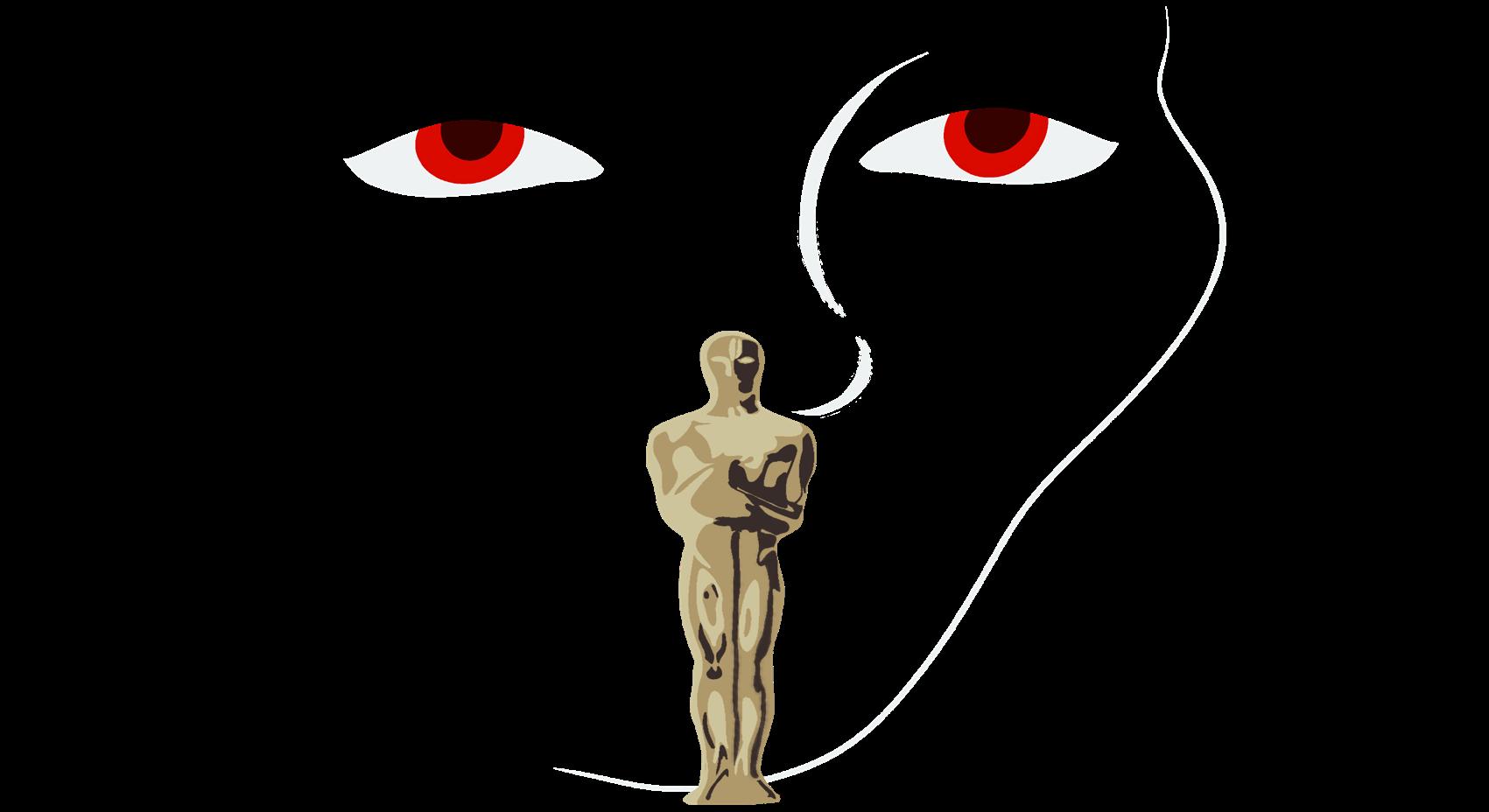
There is now a wide and considerable acknowledgement of the Academy’s bias against horror, especially due to the snubbed performances in the last few years. Toni Collette’s emotionally charged performance in Hereditary (2017) was ignored causing outrage from fans and critics alike. This was then a trend continually seen with Lupita Nyong’o for Us (2019) and Florence Pugh for Midsommar (2019), shut out from nominations despite stellar performances and that’s to just name a few. This is not to deny that the actors and actresses who were nominated
in the respective years did not deserve to be so, it is instead highlighting how due to a film being a horror, the performances are not being considered despite being on an equal level. It also must be noted how it is often women who are the ones who are having their performances ignored despite providing deep and nuanced characters, seen again in this year’s nominations lacking the inclusion of Mia Goth or Keke Palmer.
Goth in a recent interview commented on the lack of representation of horror at the Oscars, simply saying what every fan feels: ‘I think that it’s very political. It’s not entirely based on the quality of a project per se. There’s a lot going on there and a lot of cooks in the kitchen when it comes to nominations. Maybe I shouldn’t say that, but I think that’s true. I think a lot of people know that.’ The prejudice against the horror genre is obvious yet still exists. Ultimately, the Academy will not move forward until they embrace their fears and start showing how being afraid is something of huge worth.
Art & Entertainment 03
Design: Megan Napier
The Inspiring Comeback
In the cold early months of the year, it is common for people to feel down in the dumps, however, there has been an interesting comeback for one celebrity and the story is as uplifting as it can be for the more mellow months. Brendan Fraser is a comedy and drama actor who kicked off his career in the 1991 film Dogfight. Throughout the 90s the actor continued picking up roles and gaining recognition in the industry, starring in titles such as

George in the Jungle, The Mummy and Gods and Monsters. The young actor was quickly rising to stardom and expected to be one of the biggest names in Hollywood. However, as of today his name is where it should be given his quick rise in success and incredible acting.
In 2008, the then 40-yearold actor noted in an interview that doing his own stunts was painfully affecting his body, and he
Arts & Entertainment Words: Kirsten Moreton 12
had to undergo multiple surgeries to heal it. Between that time and now, Fraser began distancing himself from the spotlight to focus on his recovery, an unfortunate decision he was forced to make. Just a few of his surgeries included vocal cord repair, a laminectomy on his spine which needed to be done twice, a partial knee replacement as well as seven years total of other surgeries. Sadly, this was not the only struggle for the actor at the time. His mother passed, he was going through a painful divorce with his wife and recently he has spoken about being
sexually harassed on set when he was young. All of this would be a lot for anyone to deal with and the added pressure of the spotlight just made things worse. For that reason, Brendan removed himself from the spotlight.
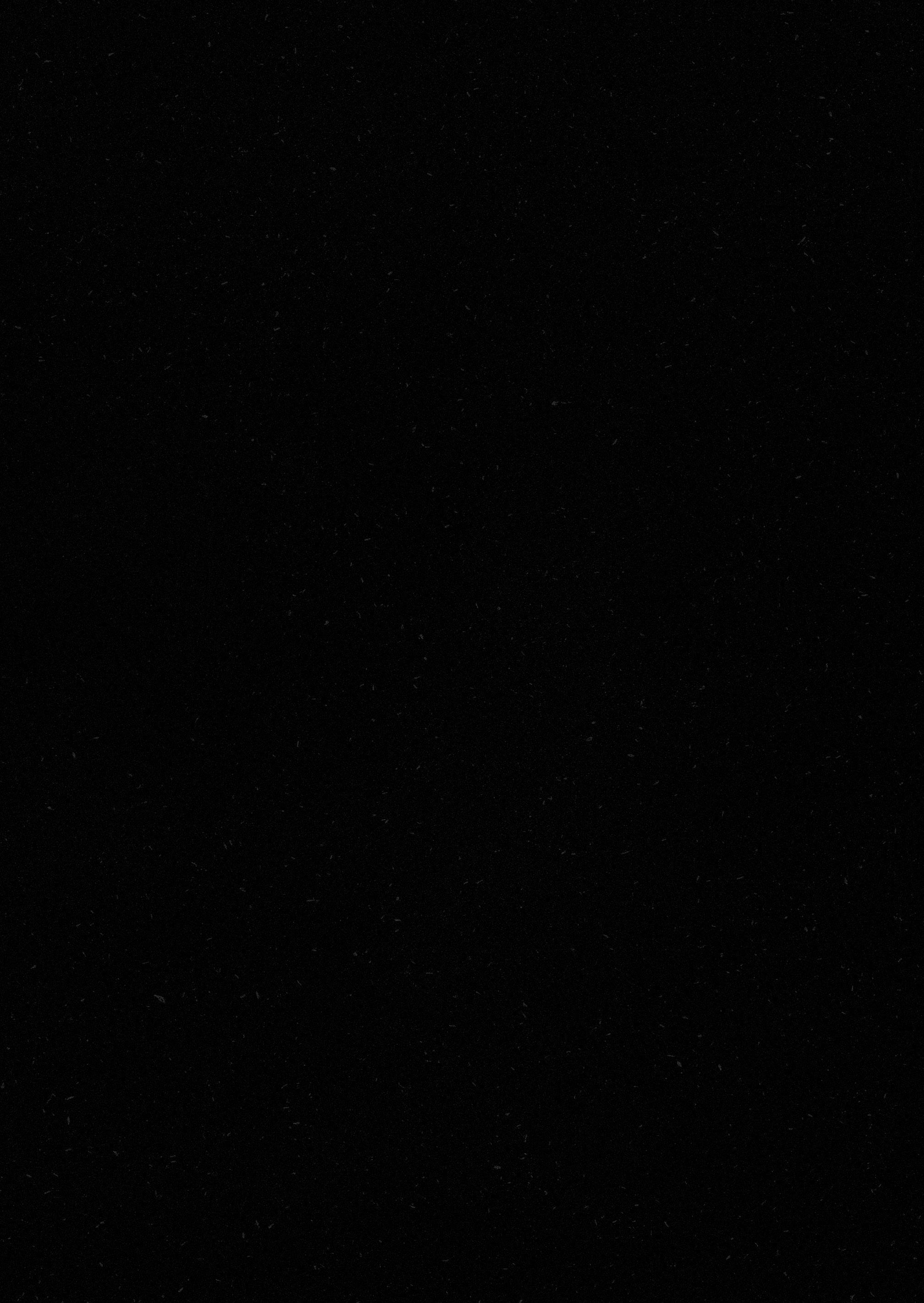
Between 2008 and now, the actor only featured in smaller roles never really making a comeback to the spotlight. He struggled to get back to his former glory and felt low throughout that time, only opening up about this in a 2018 interview. Brendan made his first larger appearance in 2022 starring in The Whale, his first leading role in ten years. The film had an amazing reception at film festivals and by critics, Fraser was even
given a five-minute standing ovation which moved the humble actor to tears.

He also won the Best Actor award at the Toronto Film festival stating, ‘I think the last time I waited to hear my name called out loud was in grade 4 and it was from the peewee bowling league.’ The actor was since nominated for a Golden Globe and for his first ever Oscar for Best Actor.

In a world where we are used to seeing celebrities acting stuck up and entitled, it is refreshing to see such an inspiring story of coming back after dealing with a lot of misfortunes. Brendan Fraser’s fight to come back to acting and continue his career is both inspiring and uplifting. He is a great reminder that anyone can get up and keep going despite the setbacks that some people inevitably face.
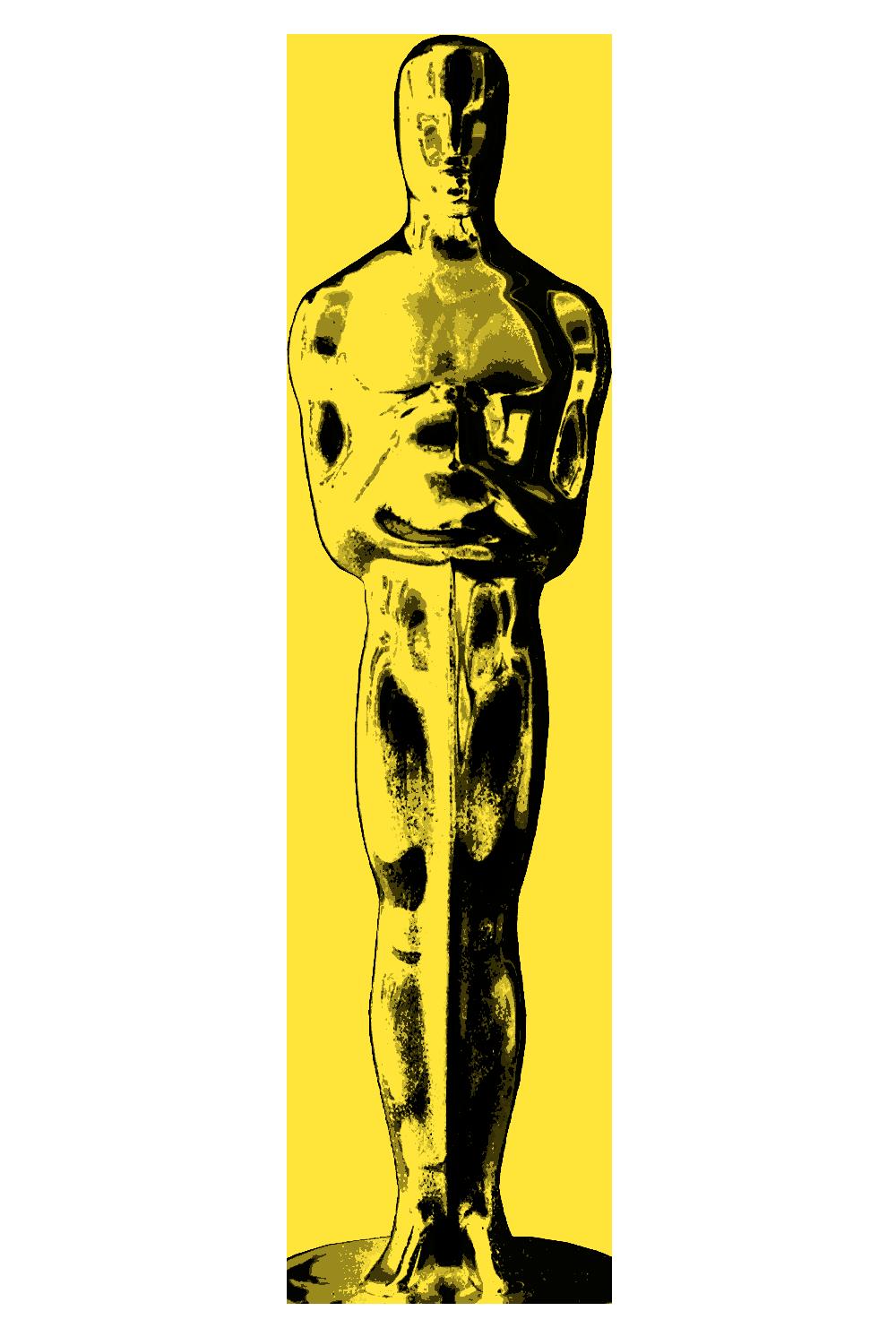
Arts & Entertainment 13 Design: Lewis Elks
Perpetually Waiting For a Sequel
Most of you will probably be familiar with the popular series Emily in Paris, starring Lily Collins, which premiered in October 2020. Due to the first season having been a huge success, another season was released almost exactly a year later, in December 2021, and most recently season three came out in late December of 2022. There could be a certain pattern that the producers of the show might have put in place intentionally. Why space the releases out by almost exactly a year, twice in a row, during the holiday season?
The funny and sympathetic misadventures of Emily drew in the audiences immediately. Her slight awkwardness and her difficult relationship with her boss made her a ‘normal’ character with whom the viewer could identify, as well as motivate them to keep going as everything apparently turns to gold in Emily’s hands. Nevertheless, there were also some disagreements vis-à-vis the representation of French stereotypes in the series, especially from the American point of view. The success overweighed the criticism though, so the decision to continue the series was taken.
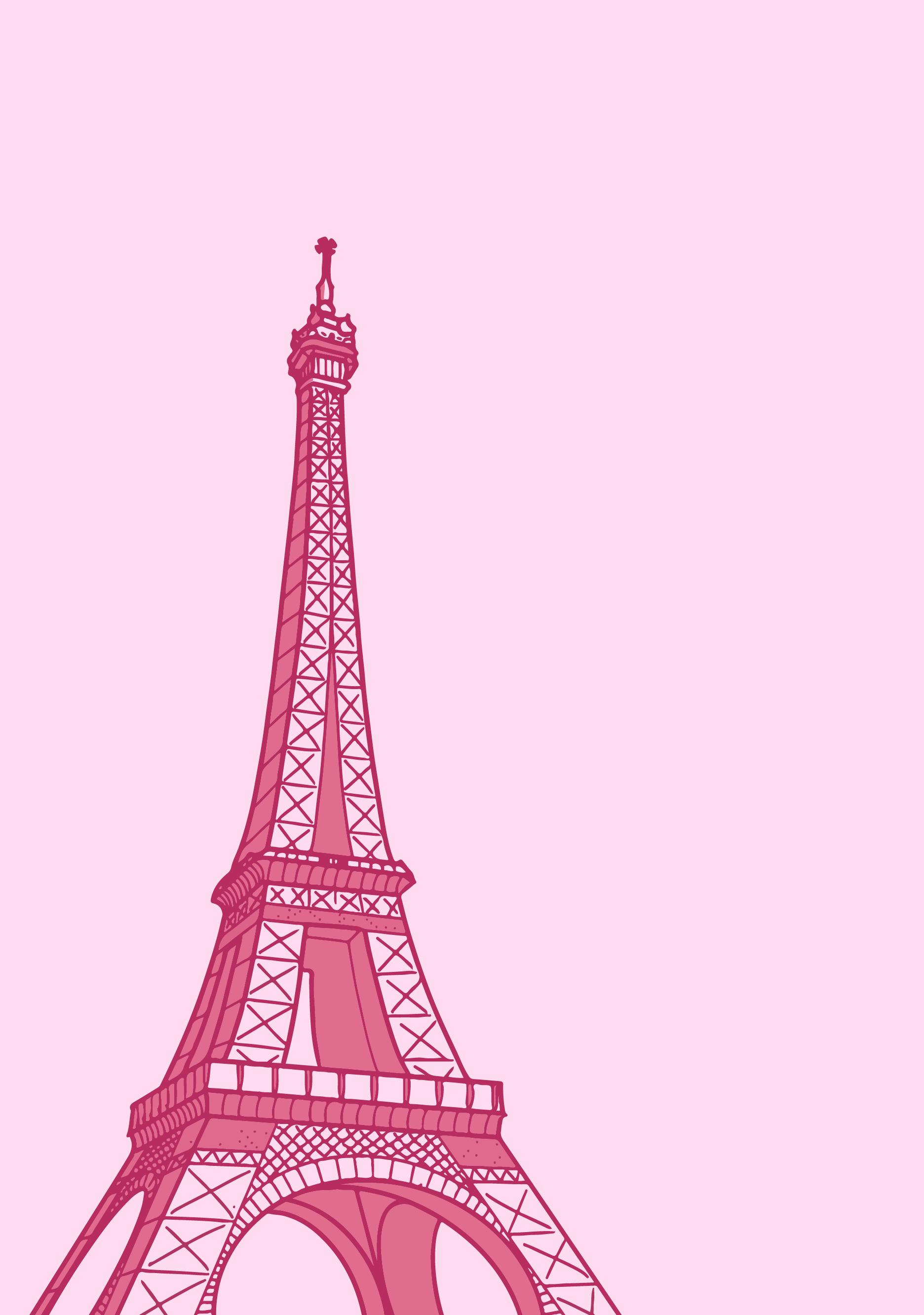
Arts & Entertainment Words: Chelsea Dalscheid 14
Now, is it possible to produce, film and edit another storyline all in one year? They must have had it in mind already, hoping for a successful debut. Then why did they not release two seasons at once, or spaced out by half a year?
Firstly, it prevents binge-watching, and it effectively keeps up the suspense considering the cliff-hangers introduced in each season finale, arousing the viewer’s curiosity. Furthermore, the release dates being in December is worth mentioning because there are rumours that the fourth season will appear around that time too. December is the epitome of the holiday season, the cold weather propels people to spend more time inside, cosy up on the sofa with a blanket, and working people or students are likely to have some time off. All these instances produce a ‘fertile soil’ for the series to grow successful on.
Considering what I have mentioned above, I don’t believe the producers chose those release dates coincidentally. They had their ultimate goal in mind, i.e., producing a profitable and enjoyable show, which is something they achieved. It would also have been too ‘easy’ to release them all at the same time: the hype and buzz surrounding Emily In Paris might have been over too quickly with a simultaneous drop, since our lives are dictated by the fast-paced rhythm of new releases.
Personally, I liked that the seasons were spaced out by a year each and that they were released in the holiday season because it gave me something to look forward to, since I am prone to devouring a series in two days. It being the holiday season I was at home, and thus was able to enjoy the show with my mother who enjoyed it a lot too. We both can’t wait for the fourth season coming out in December 2023!

Arts & Entertainment 15 Design: Constance McRobert-Smith
Review –The Banshees of Inisherin
It’s easy to feel trapped in life. In either a literal or a metaphorical sense, the feeling that one is unable to escape their current work, home, relationship, etc. is something that is extremely common, and probably fundamental to human nature. This is unfortunate, as it is not a particularly nice feeling. We tend to yearn for the future, and the opportunities that may await us, and as a result neglect to make the most of the present moment. Personally, it’s a feeling that I have experienced at a few points in my life, and I think The Banshees of Inisherin captures it beautifully.
On paper, the film tells a very simple story. In the early 1920s, on the fictional island of Inisherin off the coast of Ireland, the friendship between Colm Doherty (Brendan Gleeson) and Pádraic Súilleabháin (Colin Farrell) comes to an abrupt end when the former tells the latter that he no longer wants anything to do with him, and that he simply doesn’t like him anymore. The fallout of this event, and its effect on the relationship of the two characters, is the driving force of the plot, and a colourful supporting cast adds extra flavour.

Arts & Entertainment
16
Words: Angus Coleman
I’ve opted to make this review short, as I strongly feel that the less one knows about the film before going in, the better. However, suffice it to say that while the story may seem minimalist, it conceals dizzying thematic depth. Director Martin McDonagh has crafted an experience that holds the audience’s attention through wonderfully subtle cues and call-backs in the dialogue, cinematography, editing and mise-en-scène, resulting in a film that exemplifies the truth in the old idiom ‘less is more’. The film also manages to juggle moments of comedy and drama wonderfully.
While the film is for the most part a black comedy, that feeling of entrapment permeates the entire story from beginning to end. As the viewer comes to understand, the actions of the characters are mainly driven by their responses to feeling trapped, just in different ways. Whether they feel trapped in the titular setting, in their old or young age, or their mannerisms or personality, the ways in which these people are held hostage by their circumstances and emotions is what the film explores. While these themes may not be entirely revolutionary, I can’t remember the last time a film examined them as elegantly as The Banshees of Inisherin does.

Arts & Entertainment
17
Design: Jack Stamp
Penultimate

She can hear it each night. A whirring that splutters, building like an illness, coughs becoming choking. In lamplight, Edme watches her brother’s sleeping form. Alexander’s skin has barely felt real sun, only artificial UV, yet he still has freckles. She counts them, mumbling under her breath. The words are barely a whisper, brush of lips. The quietness lets her hear when the ventilation shaft gives its final gasp. Tears slip in the vacuum of sound.
“While you were sleeping.” Edme hefts on a mothballed windbreaker. “And I told you, there’s nothing you could do. The system needs someone from above… so I’m going up.”
“No. No you can’t.”
“Someone needs to fix it. I’ll try to build a new protective barrier too – if I have time.”
“No.” He rushes to her. Hands about her back. He’s so tall these days. “Please Ed, no.”
“What are you doing?” Sleep mars Alexander’s speech as water smears ink.
Edme focuses on buckling her boots, back to him. Keeps her voice soft, it uses less oxygen. “The ventilation shaft is blocked.”
She can hear his frown, “but the cleaning mechanism –“
“That broke weeks ago.” Edme forces herself to look his way. “I didn’t tell you because there’s nothing you could do. I’ve tried repairing it, but the damage is up top. Try to keep your breathing under control, don’t waste what’s left.”
Alexander’s fists curl on the bedsheets. He makes no effort to lessen his increasingly staccato breaths.
“When? Why couldn’t I have tried fixing it?”
“Alex…” Edme doesn’t know if this is better or worse. Weeks spent listening, hoping it would simply never fail. She wrote a letter for him; thought she could leave it by his sleeping form. Now it will be hugs and tears.
“You can’t leave.”
“I can’t see you die.”
Anger tenses his grip. “I’ll die anyway, eventually. I’ll die alone.”
“You don’t know that, not for sure –”
“Yeah? How many times have you sent out those radio signals? There’s no one out there!”
“There must be someone. Government bunker, preppers – space! There will be someone – you will find them. I know you will.”
Creative Writing Words: Renée Dumenil 18
Shaking his head, Alexander’s breath tickles her hair, each exhale is a tick of a clock. Edme tries to keep her tears in, noting the wetness about his eyes. Pulls her body away, fast. “I’ve got to go.”
He grabs at her wrist, her bag. She pushes him away, throws herself up the shaft, crouching on ladder rungs, activates the seal behind her. It locks, the hiss of air sending shivers. She hears Alexander slam his fists against it, try to key in the code. It doesn’t work, Edme changed it. He’ll forgive her, eventually. The important thing is that he lives. She doesn’t allow herself to imagine what kind of life that might be, the last man on earth, trapped in a bunker. All that matters is his life.
He keeps slamming on the shaft seal as she climbs. It feels endless, but too soon she must put on gloves, the ladder rungs growing warm. Tinted goggles fix over her eyes, a wrap snug around her face. At the top, there are two more seals. Between them, at the final one, she has to hook her feet about the rungs and free her arms to force it open. Sand rushes in, a deluge of rough gold. The second seal holds, Alexander won’t be caved in. He’ll find the new seal codes in a note, she didn’t want him trapped forever, someone might be alive to rescue him. If there is anyone else.
There must be. On the surface, the sun burns, blinds. Rays cut
Design: Alessia Tavacca
through Edme’s clothing, biting into her skin. She knows, instantly, that her time is short. Slides over dunes, fighting every urge to bury back beneath them. Sand has been blown over the ventilation system, dousing it. Edme pulls a spade from her bag, sweat dripping, digs.
She works for a time unknown, clears it out, fixes the cleaning mechanism, cleans the access shaft, moves grains into heaps, hopeful barricades. Her skin blisters, cracks, too dry for sweat. Breath comes fast. Lips bleed, scab, bleed again. Nausea pools. Her tongue is a dead thing, a slab of painful dust. Going back into the bunker is pointless, the heat and radiation exposure has already marked her dead. Returning would only bring sand and a corpse – a site of infection for her brother to deal with.
Too dizzy to stand, she curls around the ventilation shaft, a final attempt at a barrier. Pain, inside and out. Edme lifts her hand; it looks blueish against the gold landscape. Light bursts.“Almost the last human.” Her words don’t make sound, she can’t articulate enough. Her eyes close.

Creative Writing 19
Under Poseidon’s Skin
Poseidon flexes blue muscles rippling slippery skin, as seaweed veins bleed iodine. He screams through a frenzied throat of foam Cave mouths clam shut they swallow it all into silence an indigestible end Dry, granite rock tongues suck floods into puddles
He once scattered odysseys in his wake, the void of a blue-eyed cyclops Each blink orchestrated siren songs, a cacophony of galloping waves that gulped life whole

Diluted. Hung dry under a churning chariot sun Dolphins burst kelp-clogged pores of skin like silver needles binding him tighter, until he dissolves in mouths of darkness


Creative Writing
20
Words: Orla Davey, Photography: Maria Touloupa, Design: Fiona Howard
Words: Kate Heggie, Design: Jack Stamp
the entertainers
a clown walks along the beach a single balloon - its companiondances in the breeze
from a distance they are happy entertainers but as a gale pushes them closer
the clown’s smile is smudged and droops.

the twinkling eyes; silver glitter that has begun to tarnish
the balloon writhes in the grasp of the wind pulling it away from its partner.
Creative Writing 21
Words: Rebecca E Raddatz, Design: Alex Parton, Photography: Ada Ung
How We Make It
to K. - for every coffee, under every sky
there will be no more last minute coffee runs out-of-breath stumbling into empty rooms
morning, evening, afternoons there will be no more ‘i’m just around the corner, almost there i almost made it’
there will be no more, ‘take a right and then up the stairs’, no being back again no forgetting what your street is called
no: ‘i think that i will quit’ no: ‘cheer-up coffee coming up in ten!’ no silly arguments and no long drives through colder, whitewashed, storm-swept skies.
will there be time
for voices on the phone for stories about people neither of us knows time for a hundred thousand little things like what you had for lunch and HE BOUGHT ME A RING
that, thrown by some small child’s hand, floats a thousand paper cranes along the firmament and folds between its satin sheets all the friends with strangers’ faces that we’ll meet below the well-known red of traffic lights behind the bars and restaurants among the throngs of people pushing past
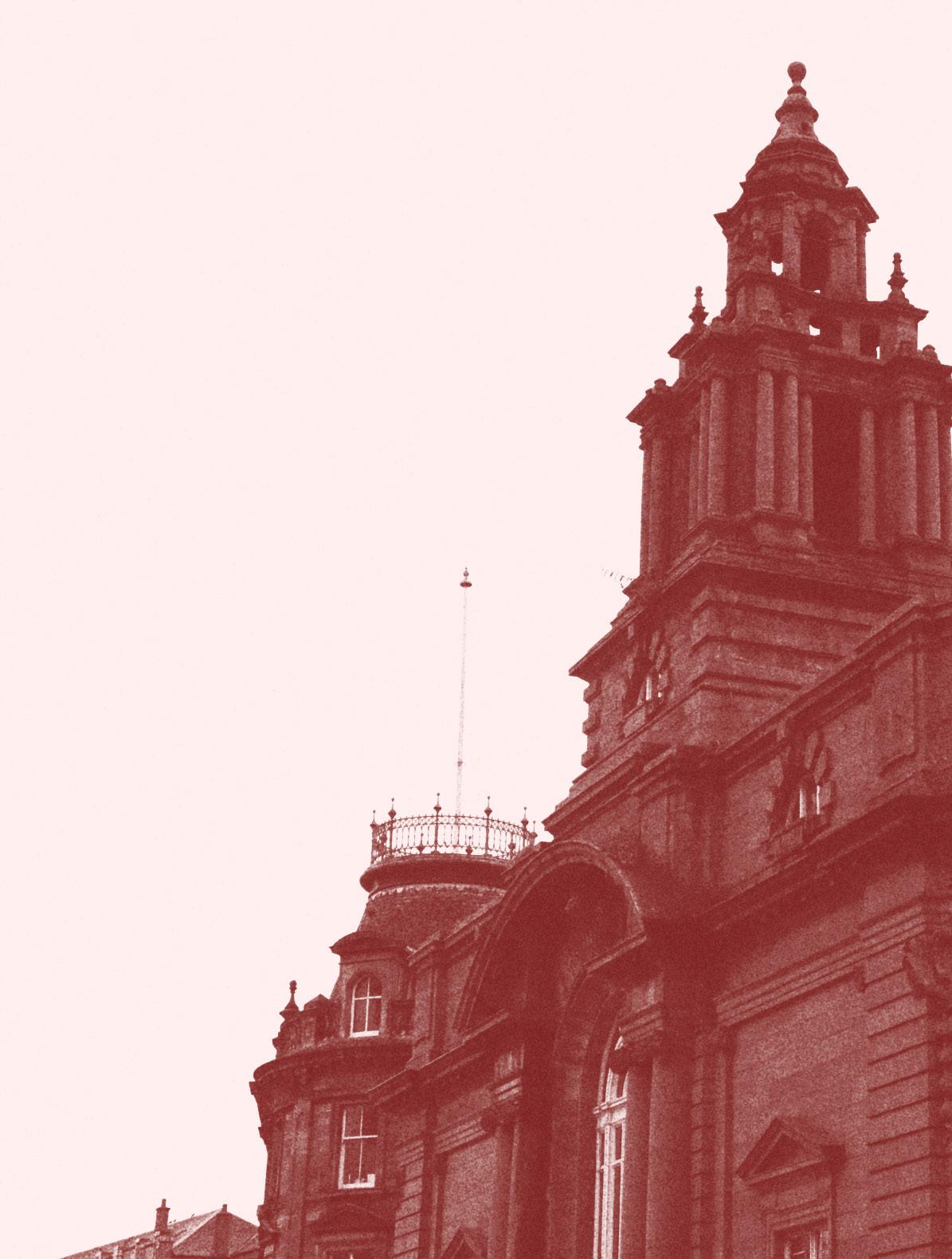
and sitting on the corner of a vast and empty space unable to explain




we have almost made it
there will still be people married in these streets that I no longer walk other than a voice between your fingers when we talk there will still be seagulls scattering across our skies dots of screaming white against the branches of the night
The Earth fell away as I walked
we all once gathered here commemorating our final days embracing one another as stars fell from the sky and flames raced across the continent we were mesmerised; the terrifying beauty of horror then the world was torn apart
I stand where the community once gathered shopping; the trivialities of selling and buying now replaced with the ghostly echoes of conversations stuck in a never-ending, bouncing crescendo from smouldered concrete to charred remnants of trees
ashen shadows, where once were people staining the scattered shells of stagnant streets replacing the eternal nothingness, a petrifying emptiness
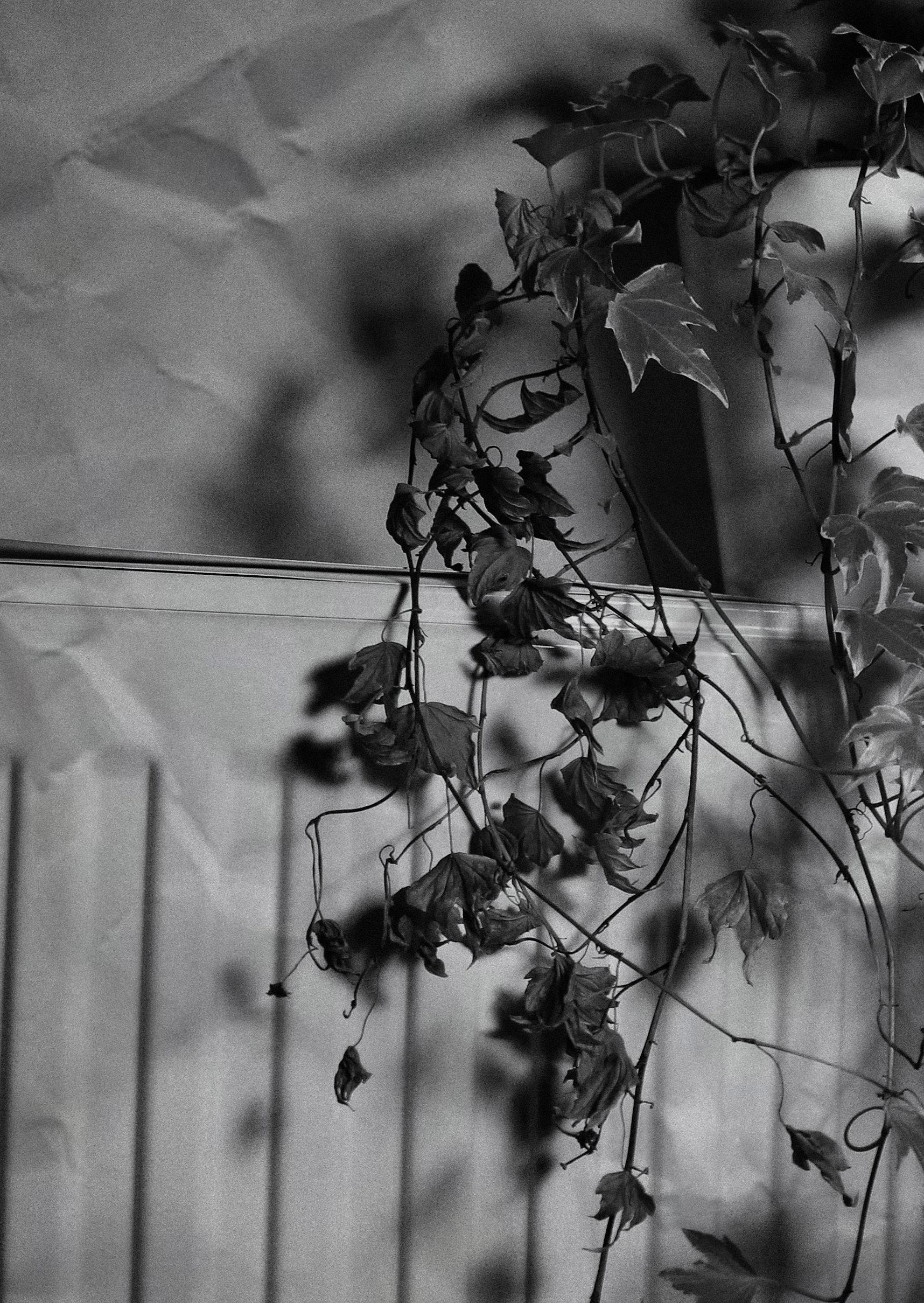
the part of town which was once run down now looks the same as everywhere else the people who once were wealthy inhaled and exhaled just the same as those who were not the same singed scent blackish grey colour
the people were gone well before the oceans dried up; nature seemed to hold out longer than mankind more durable and wise ageless, and now, non-existentthe fish disappeared long before then
the planet was consumed even before it all came to an end apathy and belligerence leading to calamity the eulogy of a species
The Earth’s final days passed Yet I am still here
Inheriting the wasteland of regrets

Happy Men Don’t Lie In Streets
The businessman moved like a pebble in the flow of the corporate workforce. It was 7:30 am on a Monday and the sky reflected the sourness of this fact. He wore his usual uniform of a stern expression and a suit fraying slightly at the seams. His legs knew the way by themselves and so he allowed his mind to wander. His thoughts had strayed quite far when he found himself cast out of balance by an obstruction in his path. Arms wheeling to stay upright, the businessman gave an irritated bark to no one in particular. Much to his surprise, the obstruction apologised.


“Sorry, did I scare you?” It said.
Still perturbed by his near fall, the businessman was slow to answer. He eyed the obstacle, which he now saw was the humped form of a man’s body lying upon the concrete.

“Are you okay?” spoke the lying man. “You seem startled.”
The businessman most definitely was startled.
“Yes of course I’m- are you okay?” He replied. “Oh yes, I’m lovely thank you.”
Creative Writing 24
Words: Hannah Hamilton
Having steadied his chest, the businessman found his head began to throb.
“You can’t lie here, you know.”
“It seems that I can.”
“But you shouldn’t be.”
“It’s a public street, can the public not use it?”
Vexation burned in the cheeks of the standing man. In his earlier years, he might have been compelled to offer aid or demonstrate compassion but nowadays he just donated to charity. Being a good samaritan involved too much kneeling and that was harsh on ageing knees.
“Listen,” The businessman sighed. “I understand you’re upset-”
“I’m not upset.”
“Of course, you’re upset.”
“I’m not upset, you’re upset.”
Heat had risen to the tip of the businessman’s ears by this time. He stamped his foot a little as he rebutted.
“Don’t be so childish!”
The lying man was silent for a while, graciously allowing for composure to be regained. When he felt enough time had elapsed, the lying man ventured a question into the paused conversation.
“Perhaps you would feel better if you lay down for a while? The businessman walked away. He smoothed his suit and tightened his tie as he muttered to himself, ‘Can’t help those who won’t help themselves’.
...
During work hours, time passed slowly. He tried to keep focus on his immediate surroundings but found his mind returned often to the man lying outside. His manager scolded his idleness and charged his whole team with brainstorming a new PR campaign as punishment.
“What kind of establishment do you think this is?” His manager had said. “I thought a man of your age would know better than to waste time.”
The team, already in a gloomy Monday mood, were unhappy with the task and the meeting was a laborious affair. It was during lunch, as he looked down upon the irritant of his morning, that the businessman had his excellent idea. He pitched it to the team that afternoon to resounding approval.
His manager gave praise and hinted, as he usually did, at promotion (‘game changer’ he said to the businessman ‘big stuff’). The project would be considerable and his colleagues teased about all the extra hours it would demand. The campaign featured a man lying upon a concrete ground (an actor, of course) and the phrase ‘Lying around gets you nowhere, join Ardor & Ardor to lift yourself up!’. The PR team expected an uptick in applications for employment the next morning.
The lying man lay quite still all day. He looked up at the sky like a jewel framed by the silvery tips of the skycrapers. He watched it burn from red to blue and back to red again with the intentness of one who watches the tide come in, waiting for it to be just right.
At around 7.30 pm, when the evening air was settling like a sigh over the city and the sun rescinded its last fiery tongue, the lying man rolled to his feet and stood. Hands in the pockets of his crumpled suit, he began to walk and soon was lost to the channels and tributaries of the city.
...
At 9 o’clock, the businessman emerged with his colleagues. They were eager to return home, already getting a head-start on Tuesday complaining. The businessman grumbled in kind but paused, however, when he came to a familiar spot on the ground.
“Why would anyone waste a day on the ground like that?” He asked no one in particular.
That night, as he lay like a dark puddle in the centre of his bed, his mind drifted back to that spot on the concrete. His thoughts were of smiling men lying on the ground as his body grew heavy and soon was lost to the lure of sleep.

Creative Writing 25
Design: Morgan Palmer
The Voice of the Iranian People
In September 2022, 22-year-old Mahsa Amini died while in the custody of the Guidance Patrol, the wing of the police respon sible for enforcing Shariah Law in Iran. Her arrest was reportedly due to her failure to wear a Hijab as stipulated by the law. The line adopted by Iranian officials stated that Amini’s cause of death was a heart attack, however her parents maintain that she suffered from no health conditions. Furthermore, eyewitnesses claimed that she was severely beaten during her arrest, and the London-based news outlet Iran International obtained CT scans showing skull fractures concurrent with serious head trauma.
This event led to a period of unprecedented unrest in Iran. Over a thousand people reportedly attended Amini’s funeral in her hometown of Saqqez, before protesting outside the local governor’s office.

By the following week, demonstrations were taking place in almost all of Iran’s major cities and as well as in many smaller urban centres in the country’s 31 provinces. Initially, the demands of the protesters included an end to the requirement for Iranian women to wear Hijabs, as well as other rights and freedoms for women and citizens in general. as other rights and freedoms for women and citizens in general. However, as the protests became larger and more organized, calls began for the removal of Ayatollah Ali Khamenei, President Ebrahim Raisi and the Islamic Republic.
The Ayatollahs have been in power since the overthrowal of the Pahlavis, Iran’s last royal dynasty, in 1979. After the revolution, the monarchical state was replaced by the present-day Islamic Republic of Iran. Founded by Ayatollah Ruhollah Khomeini, a religious leader affiliated with the rebels, the new regime was theocratic in nature and held to traditional values, opposing the societal reforms and closer ties with the West advocated by Mohammad Reza Pahlavi, the last Shah of Iran. The republic also deracinated Sunni Islam in the country, solidifying Shia as the state faith, and even going so far as to support Shia militancy in the region.

Words: Angus Coleman
26 Current Affairs
Since the revolution, the Ayatollahs have had to deal with the outbreak of widespread protests on multiple occasions. In 2009, the
“Green Movement”
took to the streets of Tehran to protest the possibly fraudulent victory of Mahmoud Ahmadinejad in a presidential election that year. In 2017-18, unrest erupted over economic mismanagement and Iranian interventionism in other Middle Eastern countries. And in 2020, further anti-government protests were launched following the accidental shooting down of Ukraine Airlines Flight 752 by the Islamic Revolutionary Guard Corps, and the regime’s subsequent denial of the incident. All of the outbreaks of unrest mentioned above were dealt with through police crackdowns, where demonstrators were dispersed with riot control measures such as tear gas. Furthermore, there have been numerous instances where Iranian security forces have used live ammunition against protesters. When protests began in 2019 over a fuel price hike, Amnesty International reported that at least 208 protesters were killed by security forces. Unrest had also been quelled in the past using strategic concessions on the part of the government. Through these responses, the Ayatollahs have, so far, managed to hold on to power.

However, this time it felt different. The pent up anger of the Iranian people was finally boiling over, and the regime’s position seemed to be seriously threatened. Perhaps it was because of the uniquely feminist nature of the protests due to the inciting incident, or the fact that the movement cut across societal cleavages such as those between the middle and working classes or urban and rural areas. Whatever the case, it felt like a turning point was approaching.
So far in 2023, the British news has for the most part moved its focus to other issues. The attention of western media seems to be rather fickle in relation to the protests, especially since much of the initial speculation about the unrest spreading at a faster rate and the collapse of the Islamic Republic did not come to fruition in the first few months. However, the situation itself is far from over. In recent months, the regime has increased the severity of its crackdown on the unrest, with protesters being executed as an example to others. 22 year old Mohammad Mehdi Karami, was hanged on the 7th of January in relation to the protests. A report by BBC Persian revealed that he was not allowed to choose his defence, and was given only 15 minutes to defend himself in his sham of a trial.

Despite this, the spirit of revolution remains, with quiet acts of defiance replacing the more militant protests of the last months of 2022. Considerable international backlash has also helped to keep the cause alive. It increasingly seems like many of the people of Iran are speaking in a unified voice against their government, and that the regime’s authority has undoubtedly been undermined.
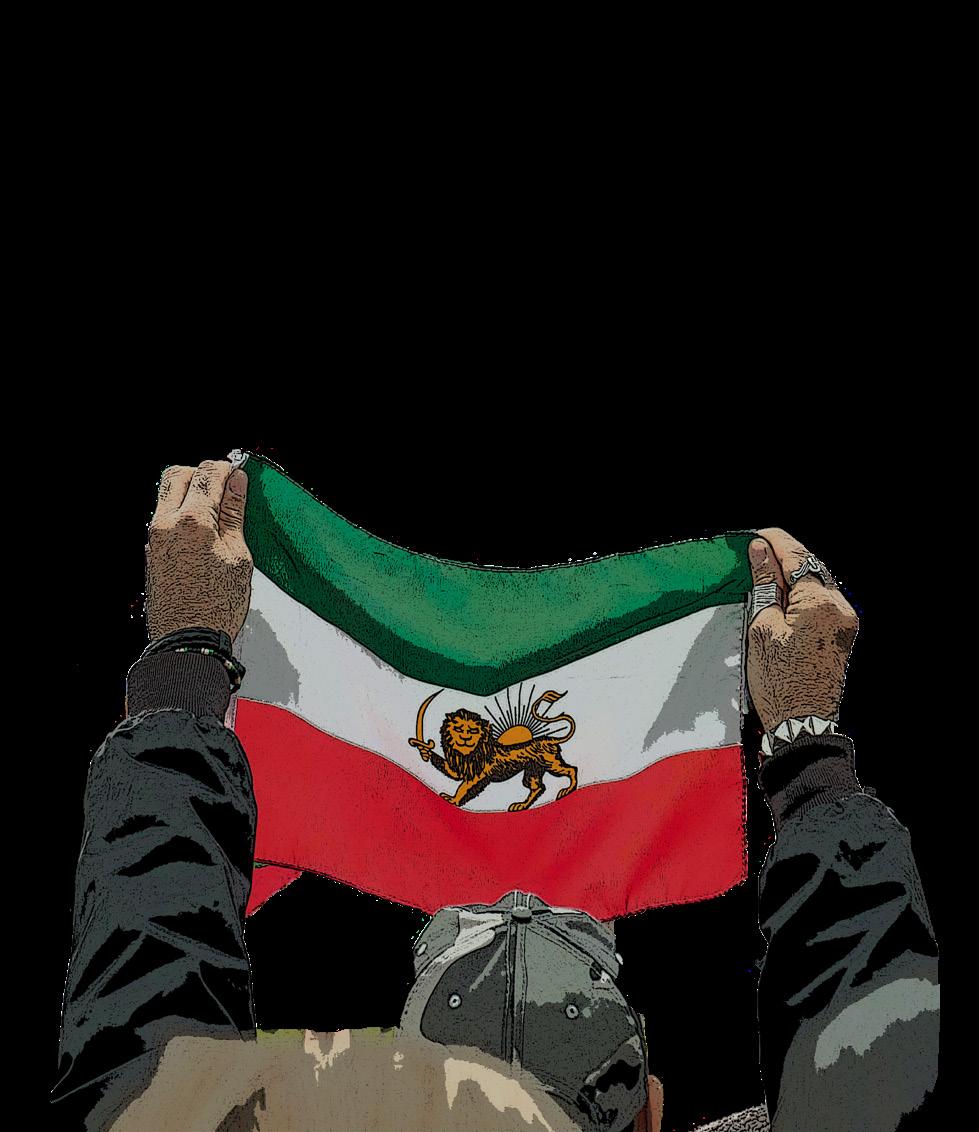
27 Current Affairs
Design: Afia Zaman
CONTENT WARNING: TRANSPHOBIA/VIOLENCE
Gender Recognition and the Fight Against It

On December 22nd, the Scottish Parliament passed the Gender Recognition Reform (Scotland) Bill. A measure that makes it easier for transgender people to obtain a Gender Recognition Certificate (GRC) which changes gender under the law. A GRC allows people to be married, buried and file taxes as their acquired gender. The bill significantly shortens the process as well as de-medicalizing it. The bill had support from groups across Scottish civil society including Stonewall Scotland and Rape Crisis Scotland, and the support of MSPs from every political party.
A GRC does not govern access to single sex spaces , it does not entitle a person to special treatment under the law and it is not a license to physically harm others, as some opponents of the reform have suggested. Many other countries such as Ireland, Argentina and Finland have passed similar laws with little controversy and no adverse effects. But despite these facts the Secretary of State for Scotland announced on January 16th of this year that he would stop the bill from going to royal assent under Section 35 of the Scotland Act. Which gives the Secretary of State the power to block a bill if it would have an adverse effect on UK wide law. This is the first time ever that a Section 35 order has been issued in the over 2 decades of the Scottish Parliament’s history, it has long been considered the ‘Nuclear Option’ and similar provisions relating the Welsh Senedd and the
Northern Irish Assembly have never been used either. This is the first time that any provision by a devolved administration has been blocked in this manner.
The political motivations behind it are clear, it allows the Conservatives to stoke their culture war narrative while also undermining a political institution that they oppose and which serves to empower their political opponents. It is a classic two birds one stone scenario.
But the result of their actions is not merely a frustrated parliament, and a number of trans people without an administrative document. This action along with others that the government and opposition have carried out make it clear that transgender people’s are not important, and implicitly sanctions violence against them. Societal violence always spills over into personal violence. Politicians are repeatedly warned about this, but they willfully ignore the simple fact that their actions have consequences.
It would not be right to end this article without mentioning the still very recent death of Brianna Ghey, a 16 year old transgender woman murdered, most likely for being trans. Brianna was kind, she has loved, and she was so very brave for being who she was at such a young age. Rest in peace Brianna.
28 Current Affairs Words: Arrowyn Williams, Design: Rachel Middleton
!
Levelling up is a hollow phrase it at first glance presents the ideas of opportunities and flourishment when it is in actuality a slap of paint over the crumbling wall holding up the remnants of the British Economy.
The plan to deliver Levelling Up was published in the Levelling Up the United Kingdom White Paper in February 2022, with its policies set to be achieved by 2030. The White Paper defined levelling up as “giving everyone the opportunity to flourish. It means people everywhere living longer and more fulfilling lives, and benefitting from sustained rises in living standards and well-being.”
This illustrative definition has been met with a period of rife strike action, austerity, inflation and crumbling trust. The government, still are pushing forward with this ambitious plan which is now undergoing desperate re-naming in order to separate itself from the outcry it has caused with its distribution .
The government distributed a portion of the Levelling Up fund through funding rounds. There have been two funding rounds where local councils submit their bids in hopes of receiving a monetary allocation, these funding rounds have focused on three investment themes- transport projects, town centre and high street regeneration and cultural investment. Already the current allocation of the Levelling Up funding has faced fierce criticisms.
Words: Saarah Mehmood, Design: Katy
Tory seats have been awarded significantly more in funding per person from the government compared to areas with similar levels of deprivation. The outcome of these bids has consequently resulted in a great deal of inspection of the wining bids, several news outlets have broadly come to the same conclusion: hat the bidding process is ineffective and that the allocation of this funding has disproportionality benefited Tory constituents.
After having looked at some successful bids I question whether they actually deliver the promised growth and flourishment. In Dundee for example, in the first round of bidding they were successful in securing £14 million to redevelop a multi-story car park into a sustainable transport hub- which if I’m right is just a car park?
I understand that this £14 million came from funds allocated to transport and regeneration however, it hard to see how the regeneration of a functional car park will help Dundee which hosts some of the highest levels of deprivation in Scotland.
Perhaps we should not leave funding decision for local councils in the hands of a civil servants in central London who are out of touch with the difficult realities of each council.
Ultimately, having witnessed this incredible wave of protests it is clear that it is our government instead which needs to ‘Level Up’.
Current Affairs 29
The German Coup Plot of December 2022
whom were members of the Reichsburger (Citizens of the Reich) movement, planned to storm the Reichstag parliament building in Berlin and install aristocrat Heinrich XIII as a leader of a new state.
among them former members of the military and ex-elite soldiers from special units.
When the news of a plotted German coup d’etat appeared in December 2022, the first thought that struck my mind is ‘What’s going on?’. We are living in the 21st century where supposedly such things are considered impossible with established democracy in the world, especially when it comes to a country like Germany. This event was preceded by the election of a right-wing Prime Minister in Italy and Kanye West’s antisemitic remarks, and now Germany joined this delirium with a proponent of the German Reich and antisemitic conspiracy theories – Heinrich XIII Prinz Reuss. The investigators have said the group, many of
Members of the Reichsburger movement deny the existence of the German Federal Republic and believe that the current German State is occupied by the Western powers disintegrating the true identity of the German nation. They claim that Germany isn’t an independent state, but rather a construct created by the victorious allies after World War II. The movement is made up of small groups and individuals located throughout Germany who refused to pay taxes and even declared their own small ‘national territories’, which they call the ‘Second German Empire’. By estimation, 50 men and women are said to have been part of the group
According to the Federal Prosecutor’s Office, there were plans to create a transitional government to establish a new state order.
It was foolish of us to think that humanity would not repeat the mistakes of the past and would forget about wars and fascism once and for all. However, the failed overthrow of the German government reminds us that human nature is unchangeable in its virtues and vices. Therefore, the failed German coup d’état shouldn’t surprise us, as it was always present in society awaiting the right time to emerge.
So, are we guaranteed peace in the modern world? Or we forgot that peace was never guaranteed, and we might cause another disaster upon mankind.
Current Affairs Words: Adila Muradova , Design: Fiona Howard 30
“It was foolish of us to think that humanity would not repeat the mistakes of the past”
Labour’s Self-Service Social Safety Net
Have you ever self-diagnosed using a search engine? If so, how’d it go? If your answer is “very well” you may well find cause for optimism in the plans of Prime Ministerial hopeful Sir Keir Starmer. In a piece for the Daily Telegraph, Starmer -presumably through consultation with Shadow Health Secretary Wes Streeting- laid out plans for patient ‘self-referral’ to secondary care.
Streeting elaborated on the plan in an interview with the Times stating that GPs should no longer be the “sole gatekeepers” of healthcare. This seemed -to me, a sufferer of health anxietyan exceptionally baffling idea, or at the very least one requiring some explanation.
Luckily his boss, Labour Leader Keir Starmer, would provide the requisite clarity on the Laura Kuenssberg show. Starmer suggested patients refer themselves to specialists when required. As a pharmacy employee, I am under guidance to direct patients with eye issues to an optometrist, maybe Labour plan to extend this process. Not exactly. When Kuenssberg
pushed for an example of the type care a patient may refer themselves to, Starmer replied: “If you’ve got internal bleeding and you just want a test, there ought to be a way that doesn’t involve going to see a GP.”
We all hate a gatekeeper, don’t we? The guy at the party who opines, through a smirk, that you don’t ‘get’ the film unless you read the book. Or the ignorant sneer when you tell a ‘real fan’ you only like that 90s band’s greatest hits.
Unfortunately, there are certain circumstancessuch as when your insides are bleeding- that a gatekeeper might be useful. After all, whether you think you are suffering from a stomach ulcer; cancer, or a blunt abdominal injury, might depend on something arbitrary, such as which google link you clicked on first.
This may not, at the present moment, hold any bearing on life in Dundee, Scotland’s NHS is operated independently. However, I’d remind readers that Scottish Labour are poised to become the official opposition after the next
Scottish parliament elections, leader Anas Sarwar has been reluctant to distance Scottish Labour from the mothership in the way we’ve seen with, eg, the Welsh government.
What I would recommend to Labour is some sort of practising doctor -a Practitioner if you willwho, rather than specialising in a particular form of medicine or treatment, instead can give a General overview based on your symptoms and recommend you see a specialist. We should call these experts Gatekeeping Professionals.
Current Affairs 31
Words: Liam McClurg, Design: Fiona Howard
The Spark of Conflict Reignited
Tensions have reached a breaking point recently on the edge of the Mediterranean Sea, where conflict between Israelis and Palestinians have escalated yet again. A combination of recent events have led to this point, the most extreme escalation seen in the West Bank for years. An Israeli security raid killed ten Palestinians in a Jenin refugee camp on Thursday. Following this, a Palestinian man killed seven Israeli citizens not long after. Previously to this, on the eighth of January, there was widespread protests by Israeli citizens against Netanyahu’s government recently sworn in. The protests surrounded plans to further expand the occupational areas across the West Bank, as well as weaken Israel’s judicial system. Many Israeli’s viewed as the beckoning of a progressively anti-democratic set up for the state of Israel. These protests have continued to grow in size and intensity alongside the rising tensions between the Palestinians and Israeli’s. Israel has notably featured as a key part of Washington’s foreign policy, and this particular escalation triggered meetings between the US secretary of state Blinken, and Mahmoud Abbas, the head of the Palestinian Liberation Organisation.
Historically, there has been continuous back and forth conflict between the two groups. Two devastating ‘intifadas’, (translating to ‘shaking off’ in Arabic), have occurred since the 1980’s. These took place as the result of severe escalations in domestic, political, ethnic as well as economic tensions and lack of the ability for the two camps to see eye to eye. Israel’s illegal occupation within areas such as the West Bank, are considered a violation of Article 49 of the Geneva convention, by most if not all international actors. The adjacent displacement of the Palestinian people is a central tenet of concern for the Palestinian Liberation Organisation. Although tensions between the two camps have tended to wax and wane, they have never ceased altogether. As a result, the nation increasingly appears a fragile, charged state, where disputes are capable of escalating to a dangerous degree.
The external divide is not the only entangling aspect of the Israel-Palestine problem. On either side there are internal fragmentations and conflicts. Within Israel there are political tensions and discontent with the right-wing Lukid party which many Israeli citizens have
Current Affairs Words: Annabel Duff 32
recently protested against. For Palestinians there are internal disputes which frequently flare up between Hamas and Fatah groups. These groups have occupied different areas of the Palestinian territory and held different overall ideologies about the best course of action for the Palestinian people. The internal political tension faced by groups such as the PLO is arguably accentuated by the lack of political framework in place.
The US has played a consistent role and been heavily involved in Israel’s affairs since Truman recognised the state after the provisional government’s proclamation in May of 1948. This occurred at the same point that the British mandate was ended by the League of Nations. This could be seen as a potential act of the US getting a foot in the door so to speak. Notably since this point it has been a foundational actor within discussion and operational decisions with Israel. Israel is also a key actor for the US to maintain diplomatic relations with, due to its ominous nuclear opacity within the middle east, and immense military. Unusually in this situation Blinken has criticised Israel after talks with Abbas.
Relating these historical events, the US’s role and proliferated groups brings us up to the breakdown of current events. The divide
between the two camps is still as prominent, even in the case of identifying the initial spark that set the escalations off. Israel, with backing of the US, suggests the spark was linked to the decreased security control from the Palestinian Authority in areas such as Jenin. On the other hand, Abbas, president of the Palestinian Liberation Organisation, suggests it is due to the lack of international efforts to dismantle the illegal occupation as well as Israel’s increasing security raids.
Blinken and Abbas met this week to discuss negotiations over the security plan for Jenin. This is one of the two cities that the Palestinian Authority has lost control of and has fallen into the hands of local militias. In response to these Israeli raids have occurred in these areas, which the Palestinian Authority believes undermines their legitimacy.
Washington’s intervention could cause at least a de-escalation and buffering of hostilities. The US could potentially act as a heralding of discourse between the two camps, or simply agitate tensions further by adding itself as another player embroiled in the situation. The case is hard to predict but current fears circulate around a third intifada as tensions build and protests ensue.
Current Affairs 33 Design: Fiona Howard
“conflict between Israelis and Palestinians have escalated yet again.”
DUSAsk
We're Candy, Lauren & Sylwia from DUSA's Advice Team and Amarachi, your VP of Student Wellbeing! We're here to support you with university life (academic issues, housing, wellbeing, complaints, signposting, advocacy and much more. If you'd like to pop in and chat, you can find us at DUSA level 4 in the HIVE or email advice@dusa.co.uk or vpsw@dusa.co.uk. This month we'd like to share information about SpeakEasy!
Vision & Purpose of SpeakEasy:
Mental health is equally important as our physical health but there is a deep-rooted stigma attached to how we feel about certain things. Everybody operates differently, each individual has their own sets of stress factors to deal with, some don’t even realise they need coping skills to de-stress themselves.
Talking and having mindful conversations about how you feel can help you to reflect and raise your self-awareness. DUSA along with Speak-easy (an informal support group) is coming up with weekly sessions to provide an open space for opening up, sharing, listening or just being present for others.
The support group is a student and staff volunteer lead initiative that provides community members (both students and staff) with a safe, confidential and informal space that encourages but does not pressure members to speak about their mental health.
The volunteers get trained to facilitate the sessions on a rotational basis and offer participants guidance to seek further help with their mental health if so desired/ needed. It is a project that aims to fill the gap between not seeking help and seeking professional help, which can sometimes be daunting. The support group seeks to connect and de-isolate members from their communities and promote a positive outlook on the future.
DUSAsk Words: DUSA Advice Team 34
Filling The Gap with SpeakEasy
Some Frequently Asked Questions:
The Format of SpeakEasy Sessions:
Where do the sessions take place?
Face-to-face sessions will occur in 1 Cross Row (top floor, left), across from the library.
Is there disabled access?
Unfortunately, there is no disabled access. If you are disabled or live far away from campus, you can join one of the online sessions
How many people will attend a session?
The face-to-face sessions will welcome 6 persons for the moment.
Do I need to sign-up for the session in advance?
Free sign-up sheets will be made available in advance on our socials. However, drop-ins are welcome, provided that the maximum capacity of the session hasn’t been reached yet.
Who will the sessions be led by?
Each session will be led by two trained students or staff volunteers.
Do I need to share something if I come to one of the sessions?
No, participation is totally voluntary, the support group is an informal and safe space where you will not be pressured to share anything.
Can I seek help without coming to the support group?
You can send an email to: supportgroup@dusa.co.uk.
Upcoming Schedule:
Every Monday 5.30pm – 7pm
Have a nice chat, and reconnect with others over a cup of tea/coffee. Share how you’re doing at the moment. This group is not a therapy or counselling service, it is simply a space for you to share anything you would like to and to seek guidance for your mental health journey if desired.
Remember, no struggles are too small to be shared with others! Your struggles are valid no matter how many people have them worse than you! Having such open conversations help us to realise that we are not alone and help is available. Here are a few things to expect:
> Active Listening
> Confidentiality, Disclosures and Procedures
> Sign Posting Package
> Safe Talk
DUSAsk 35 Design: Katy Blair
Ukrainian Society
As you may know, Ukraine had some rough times last year. As a result, lots of citizens were forced to leave their homes and to move to safer places. Some of the relocated people happened to be students. While some had to put their education on hold, some were lucky enough to get into the University of Dundee. And even though the journey here wasn’t the easiest one, we (I’m lucky enough to be both Ukrainian and a student here) are very grateful for the University’s support.
As Michael Hopf famously wrote: “Hard times create strong men”, we see our experience in this light and relate to this saying immensely because these times helped everyone to understand the importance of unity, friendship, and community. We realised that we can only achieve our dreams by working side by side. So, we, the students from Ukraine, decided to create the very first Dundee Ukrainian Society!
President of the Ukrainian society, Sofia Petrusenko, says that she came up with the idea of its creation at night when she realised that we need a space where anyone can ask for help and support. A space where everyone is welcomed, no matter what. We live in a strange time in a very unexpected place, and the only way to get through these challenges is together. We are all very different, we have our strengths and weaknesses but by combining our talents we can overcome any disadvantage.
Unfortunately, today Ukraine and Ukrainian people are associated with dreadful events, and it is the society’s goal to introduce another side of the country and its citizens. To show Ukrainian traditions, interesting facts, food, music, and culture in general. Everyone has a story to tell, and we want to tell ours.
Without further ado, we want to invite everyone who is interested in making new friends and learning more about a culture. The one you would probably not know under different
circumstances. It presents the opportunity to hear stories about how the society’s vice president tried to cross the Ukrainian border six times until he succeeded or to get motivated by a girl who wrote a personal statement on an evacuation train or studied for the IELTS exam in a bomb shelter.
There will be a grand event at DUSA in March where you will be able to meet us, dance to music popular in Ukraine and international music and participate in traditional games.
Please follow us for further information about future events!
Instagram: @dundee_ukrainian
CONTENT WARNING: WAR IN UKRAINE
Society Spotlight Words: Valerie Home 36
!
“Unfortunately, today Ukraine and Ukrainian people are associated with dreadful events, and it is the society’s goal to introduce another side of the country and its citizens. To show Ukrainian traditions, interesting facts, food, music, and culture in general. Everyone has a story to tell, and we want to tell ours. “

Society Spotlight 37 Design: Lewis Scott
Five More Minutes
One of the biggest challenges in my life continues to be the simple act of getting out of bed in the morning. I don’t mean that in a depressing way – I mean, somehow, even after a long eight-hour sleep, I want nothing more than to roll over and press the snooze button. At one point, I even had an alarm which forced me to get up, walk all the way to the bathroom, and solve five difficult maths questions (I’m not kidding), just to switch it off. And yet, somehow, my unconscious brain could perform the whole sequence and get back to bed with no recollection of ever having done anything. At this point, I decided something had to be done, and I went straight to researching the science of sleep.
Unlike other aspects of health, sleep is often overlooked. We live in a world where
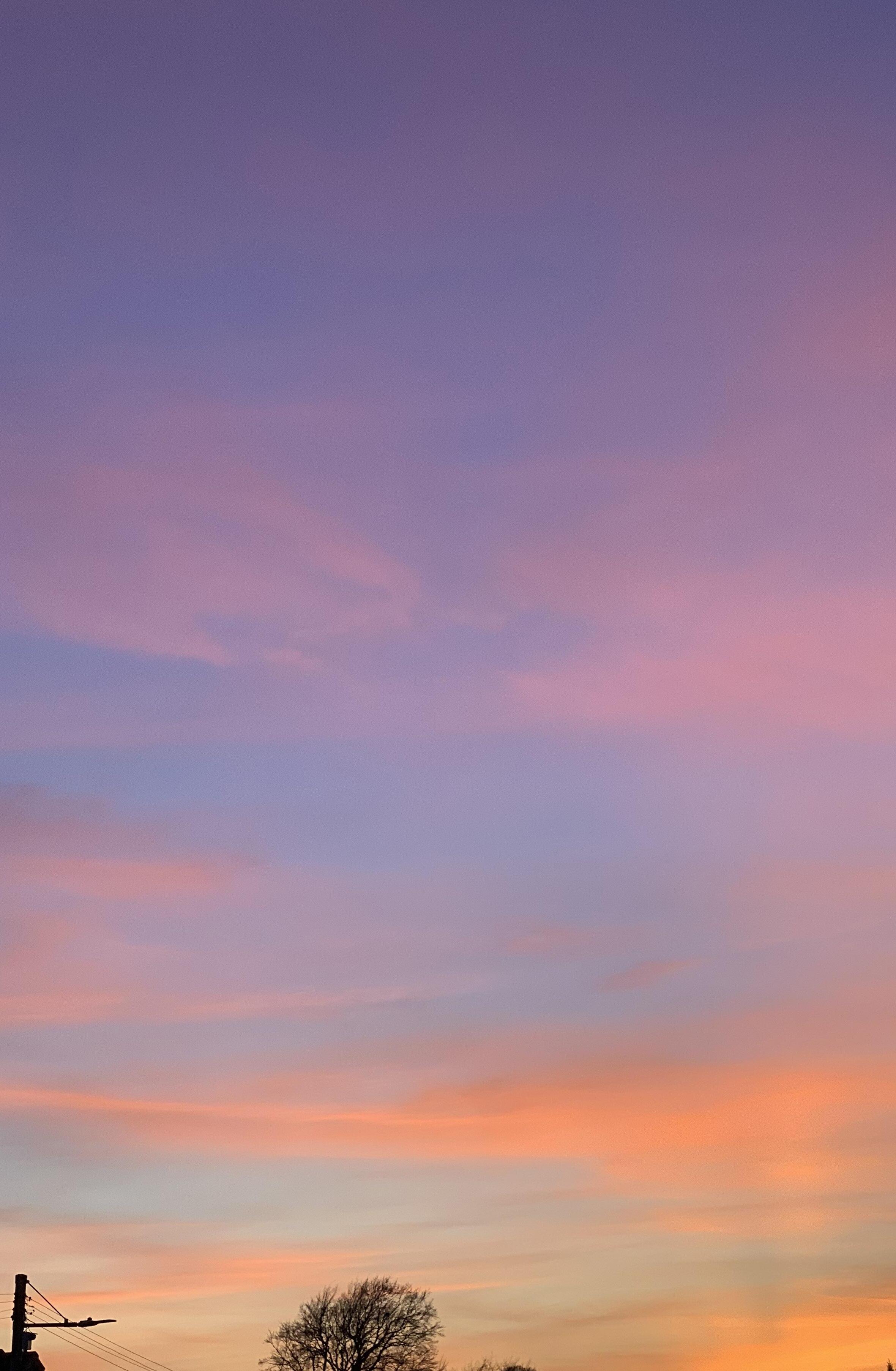
productivity is praised, and people are applauded for working long hours and having a busy lifestyle. Sleep is seen as a weakness, something inconvenient to overcome. But one quick look at the science and you’ll see it’s the foundation for every other aspect of health. Studies show that sleep helps us to process our emotions and create a fresh slate for the next day, a bit like our own personal therapy.
But how do we even start to improve our sleep? After all, good sleep and student life are two things which don’t typically go together. Well don’t worry, it doesn’t have to be an overwhelming task.
Here are five actionable tips you can do today:
38 Lifestyle
Words: Roshni Baillie
Keep it Consistent It’s All in the Lighting
Having a consistent routine is what makes our digestion, our sleep, our energy, and our eating habits work to perfection. Even at the weekends, if we can wake up at roughly the same time each day, we will make a huge difference to the quality of our health. If you’re like me, and you struggle to get up, consider scheduling in early morning commitments. Sign yourself up to that morning yoga class, organise an early coffee date with a friend, actually turn up to that nine o’clock lecture. That way your brain knows that you have to get up, and you are much more likely to do it.

Wind Down Slowly
Many people think that it we go to bed at twelve and wake up at seven, then we’ve had a nice seven hours of sleep. However, it takes out bodies a while to calm down and switch off at night, so we need to factor this into our sleep time. One way to help with this is to start getting ready for bed an hour earlier. Like little kids, having a bed-time routine help us to go from the excitement of a busy day to the calming mindset of rest.
Light has a major impact on our circadian rhythms and our body’s ability to get deep sleep. We all know that scrolling through your phone late at night isn’t going to help, but there are other ways that light can affect us. Exposing ourselves to bright, outdoor light first thing in the morning is a great way to get our bodies in sync with nature’s cycle. Likewise dimming the lamps, or getting those fairy lights on in the evening will help signal to your brain that it’s time for sleep.
Set the Scene
Let’s face it, going to bed is a lot harder when your room is a mess. It might seem obvious, but if your room looks welcoming, you’ll want to spend time there. Take this as your sign to splurge out on that cute blanket or purchase that extra house plant. Additionally, keeping your room cooler, around 18 degrees, is proven to help improve sleep quality, so keep this in mind when preparing your perfect room.
Tire Yourself Out
When you’ve got an excitable puppy or a little kid that’s got too much energy – what do you do? You send them out into the garden and let them tire themselves out. The same logic can be applied to ourselves. Simply walking a longer route to class or choosing that slightly further
away supermarket are easy ways to fit in more movement. Additionally, after noon, any caffeine we consume will still be in our system by the time we go to sleep, so try to keep it de-caff after lunch –your bedtime self will thank you for it.
Design: Ailey McCormick 39 Lifestyle
Twirl in ‘Balletcore’

In the newest addition to a long line of fashion ‘cores’, balletcore has created a storm in the world of fashion. Despite the name, the trend isn’t focusing on actual dance attire but based more loosely around the aesthetic associated with ballet. Embracing soft neutrals, lace and the traditional feminine, balletcore is combining everyday fashion with ballet’s graceful style.
Like many of the aesthetic trends TikTok has blown up, balletcore can be traced back to high fashion influences, the elegant ease of ballet both attainable yet effortlessly classic. Think ballet flats, wrap around skirts or even legwarmers; elements that can easily be linked back to dance attire, but are still trendy and modern when incorporated into day-to-day life.
Lifestyle Words: Caitlin Mathieson 40
On the runway, the intersection of comfort and feminine that helps define balletcore, can be seen as existing long before it became a mainstream trend. It pops up in tulle skirts in Valentino AW16, in lace and free moving pieces in Dior’s SS19 collection and can be seen time and time again in many of Miu Miu’s collections over the years. In media, we can look back to films such as Black Swan (2016) and it’s costuming, or the iconic tulle skirt worn by Carrie in Sex and The City. The trend is not new, just being repurposed for a new generation. The sudden reappearance of this style in popularity can be credited to the constant obsession with nostalgia that helps shape all internet fashion crazes, balletcore simply a repackaged version of the 2000s ‘dancer off duty’ trend.
However, like all trends, there is a darker side often overlooked. Comments have been made by former pro-ballerina’s about glamourising an industry of hard work and sacrifice, the focus instead on the girlishness of the concept of ballet. Ballet is often criticised for the treatment of their dancers and the conservative views industry professionals still hold surrounding body image, but it must be acknowledged this is all changing in recent years. It acts as a reminder to remain aware of the roots of trends and how the history may affect people.
Even with the lengthy background and high fashion beginnings, balletcore essentials can certainly become core pieces in a day-to-day wardrobe. The practical and stylishness cannot be denied, as well as adding a layer of feminine playfulness to any looks. Fashion inspiration comes from all around – it is just important to be aware of where you’re taking from.

Lifestyle 41 Design: Tania Sutton
On The Town
Half term has been and gone so now we must prepare for the ever-looming stress of exam season. Now, more than ever, it’s important to take care of yourself and make sure you break up all that studying with a bit of relaxation and fun. Whether it’s clubbing, going to see a show, or enjoying a comedy gig, here are some events going on in Dundee this month guaranteed to take the edge off and help you unwind.
In the mood for some comedy?







Jon Richardson is bringing his stand-up show






“The Knitwhit” to the Caird Hall on the 11th of March. Known for appearing as a team leader on “8 out of 10 Cats” and hosting his own show “Ultimate Worrier,” he is a comedian that perfectly encapsulates our dry British humour with a healthy dose of complaining and OCD tendencies. Tickets are £25 and can be bought on the Dundee City Box Office website: https://www.dundeebox.co.uk/online/default. asp?doWork::WScontent::loadArticle= Load&BOparam::WScontent::loadArticle:: article_id=B2231EDB-A70A-4E1C-B54D6A348C429016
Come Cry With Me: Ultimate Emo Night
It’s time to dust off your old studded belt and don those black skinny jeans, find your fingerless gloves and smudge that eyeliner as it’s time for the return of the Ultimate Emo Night. Come and scream along to the music of Paramore, Fall Out Boy, Green Day, Blink-182, Jimmy Eat World, Panic! At The Disco, New Found Glory, Alkaline Trio, Yellowcard, The Offspring, Good Charlotte, Linkin Park, The Used, and many many more. The event takes place on the 11th of March at Church Dundee with the doors open at 10:30 pm and tickets are available through Fatsoma at £4 for a student ticket. May the black confetti hide your tears. https://www.fatsoma.com/e/om44kb2f/comcry-with-me-ultimate-emo-night-dundee
 Jon Richardson: The Knitwit
Jon Richardson: The Knitwit
On/Off Campus
42
Words: Ayanna Cullen
St Patrick’s Day Celebrations
The DUSA all-day St. Patrick’s day party is legendary. Hosted at The Union, the party lasts a full 12 hours from 3 pm till 3 am on Friday 17th March. Even though it starts at 3 pm, there are guaranteed to be people who have been drinking since 10 o’clock in the morning. The magic of St. Patrick’s day! Wearing green is not only expected, but encouraged. With live music, DJs, karaoke, and lots of Guinness this is a party you cannot afford to miss. The tickets can be bought through Eventbrite and range from £12 to £25 (depending if you buy your ticket with a commemorative T-shirt) but you have to get in there quickly. The event has been sold out every year for 21 years straight! https://www. eventbrite.co.uk/e/the-legendary-st-patricksall-day-party-2023-tickets-529280511257?aff =ebdssbdestsearch
Calvin Harris Club Night
Are you a fan of Calvin Harris? Then the Calvin Harris club night may be just the event for you. Taking place on the 25th of March at Church Dundee, this high-energy experience allows you to let off some steam and dance like nobody’s watching. It takes you through the DJ’s biggest tunes from the early days of Disco to his most ultimate hits to date. Tickets can be bought through Fatsoma for £10 and the doors open at 10 pm. https://www.fatsoma. com/e/mvuvp1v6/calvin-harris-club-night
Design: Alessia Tavacca






















Fastlove: George Michael Tribute Show
For those who are fans of George Michael, this may be the show for you. Direct from London’s West End, it showcases the most famous works of George Michael as sung by a very talented cast. The show includes songs from Wham! Like, Wake Me Up and Careless Whisper right through to his solo career with Father Figure and Faith. The show takes place on the 31st of March at the Caird Hall and tickets can be bought from the Dundee Box Office website for £28.50. https:// www.dundeebox.co.uk/online/default.

On/Off Campus 43
Words: Catriona Pritchard

HMS UnicornA Historic Treasure
Have you always wanted to see a real-life Unicorn? If you visit City Quay, you can!
surgeon at his operating table, or the young “powder monkeys” carrying heavy bags of
legacy which we hope will be continued and maintained for many generations to come.
You can purchase a student ticket - check the HMS Unicorn website for prices and opening hours. Once onboard, you will be able to access all areas of the ship open to the public for as long as you like. You will also be able to take a tour. Just ask at the front desk and any available volunteers like myself will be happy to take you round and answer any questions you may have. No question is a silly question at HMS Unicorn, so please feel free to approach any member of staff. We value visitors’ experiences and any feedback they may have, so reviews are always much appreciated.
We look forward to seeing you and hope that you have a fantastic visit!

45 Design: Luna Jezzard
“You will be able to authentically envisage life on a nineteenth century Royal Navy frigate.”
On/Off Campus
Holly Higgins 46
Words:
If you’re a student nurse, teacher or anything of the sort, chances are you’re on placement, about to start placement or just finished. Practical work can be rough, forty-hour weeks can be relentless, and you may question your degree path and life choices time and time again throughout the six- to eight-week packed work schedule. To describe it as being thrown in the deep end is an understatement, as no amount of theory or planning can prepare you for the unpredictable nature of places like school or hospital environments. The nerves, the awkwardness, the painful small talk, are aspects of setting into a new environment we all face, however, this doesn’t mean it isn’t draining at the same time. If you’re in first year, you may feel completely out of your depth, and no one can blame you for that. It’s important to take the time (when you have a second to breathe), to reflect on yourself and your experience. As students, we tend to be harsh on ourselves if we don’t feel equipped and comfortable straight away in our working environments, but it is important to
remember how far you’ve come. Placements in Dundee can be extra scary, in Ninewells or a school for example, with the added pressure of having your peers in close proximity and everyone knowing each other. It’s important to emphasise, it’s not necessarily a bad thing considering how intense placements can be to get through using whatever self care you find valuable. If you need to listen to ‘You’re On Your Own, Kid’ on the bus ride everyday and become your own hype man, so be it. If you need to run a bubble bath the second you get home, or buy an overpriced coffee on your way every morning, don’t be hard on yourself. Let this article act as your gentle reminder to be easy on yourself. If you mess up, take it in your stride and try to be grateful you’ve made your mistake now rather than when you’re qualified. As hard as it is, enjoy the moment and remember it won’t always be this hard! Things can only get better, and you’ll only improve. Persevere as much as you can, and think of your end goal. Six weeks is nothing in the grand scheme of things!
On/Off Campus 47 Design: Joshua Harris
‘Woke Transphobia’
How TERF ideology affects the law
It wouldn’t be an exaggeration to say that trans rights in the UK have been under attack the last few years. There have been numerous Daily Mail articles, tweets, and blog posts circulating on the internet about the alleged cult-like nature of trans activism and how “dangerous” trans people are to women and children. The media’s anti-trans narrative has now affected not only the general public’s perception, but the law as well. On January 16th, 2023, Scotland’s Gender Recognition Act reform bill was blocked from proceeding to royal assent using Section 35 of the Scotland Act, the first use of Section 35 since the 1999 administration of the Scotland Act.
The Scottish reform bill was originally created to make it easier for transgender people to change their name and gender legally. While it is possible to change personal details like that via deed poll already, the reform bill would have allowed trans individuals to change the gender marker on their birth certificates, something that is important to those wanting to get married using their new name and gender. However, immense misinformation has spread about the bill, and what it would mean in practice. Some thought self-identification could be a potential danger to women, arguing that predatory men would take advantage of the new bill and access female spaces pretending to be women. However, under the Equality Act, transgender people already
changing rooms based on their gender identity, not their biological sex. Despite this, many public figures continued their campaign to block the Scottish reform bill for the “noble” cause of “protecting women and girls”.

Transphobic beliefs are rooted in multiple ideologies, but perhaps the most prevalent of these right now is trans exclusionary radical feminism and the gender critical movement. Trans exclusionary radical feminism (TERF) ideology is a branch of radical feminism that excludes trans women from the definition of womanhood based on their biological sex. Although all radical feminists agree that liberation from a patriarchal society must be achieved through radical changes in society, economy, and politics, trans exclusive feminists reject the idea of gender, and only believe in sex-based oppression. The gender critical movement derived from these exclusionary feminist ideas as the term TERF was deemed offensive and inaccurate by its followers since according to them, transgender people who were assigned female at birth (AFAB) are included in their feminism. However, AFAB non-binary people and trans men are often branded as confused and delusional or “traitors”of womanhood.
TERF beliefs have been popularized massively in recent years. In 2021, philosopher Kathleen
Opinions Words: Ren Jakab 48
CONTENT WARNING: TRANSPHOBIA
Stock and journalist Helen Joyce published books with criticisms on the transgender movement. Children’s author J.K. Rowling wrote an essay in 2020 on her criticisms about the current trans movement. While Rowling’s statements in both her essay and in tweets started out as mild concerns about female spaces and politically correct language, her attitude quickly escalated to hostility against transgender people. Rowling attended meetings with other famously gender critical women, tweeted daily about the alleged predatory nature of trans women, introduced a cross-dressing man as the murderer in her latest book, and even claimed Nicola Sturgeon was a “destroyer of women’s rights” for passing the gender recognition reform bill. Due to her massive following, lots of radical feminists and gender critical people were encouraged to speak out against trans rights. Writer Julie Bindel recently referred to the current LGBTQ+ rights movement as “queer ISIS”, and anti-trans activist Kellie Jay Keen (Posie Parker) organized several protests across the UK against the trans rights movement where people held signs such as “defy the Gaystapo”. During one of these protests, a speaker quoted from Adolf Hitler’s Mein Kampf, using the phrase “big lie” to indicate that the trans movement is based on a preposterous lie completely devoid from reality.
It might be difficult to understand the appeal of the gender critical movement, and how so many people who usually align themselves left politically go down such a radical pipeline. It’s a well-known fact that the fear of the unknown can easily inspire hatred and disgust within people. Considering it was just about twenty years ago that Section 28, prohibiting the “promotion” of homosexuality was abolished, perhaps it shouldn’t come as a surprise that LGBTQ+ people still struggle to be accepted in the UK. The outrage about transgender women using female changing rooms is reminiscent of the outrage of homophobic men and women in the 80s who didn’t want to share changing rooms with gay men and lesbians. On the other hand, most people feel very strongly about the potential harming of women and children. With the fearmongering of both gender criticals and right-wing media, it can be easy to believe that transgender people are a threat against the “most vulnerable” in society, despite the lack of evidence to support that. Ultimately, gender criticals believe they are fighting the good fight, that they are fighting to stop the modern “war on women”, and for the objective truth. Once people convince themselves that they are on the good side of history, it is eerily simple to dehumanise others seeking only to live their lives peacefully as the gender they truly are.
Opinions 49 Design:
Lifestyle
Lucas Ferguson Design: Lucas Ferguson
YOU CAN’T AFFORD THE FUTURE
You can’t afford the future. As the UK tumbles down its’ path to become the ‘world’s next Silicon Valley’, according to Rishi Sunak, it becomes apparent that a rising tide does not necessarily lift all boats. In 2000, there were 470 billionaires in the world, in 2022 there are 2,668, a few of which are predicted to hit trillionaire status within the next few years. Most of us balked when the Credit Suisse Global Wealth report in 2021 revealed that 47.8% of total wealth was owned by 1% of the world’s population, but were any of us really surprised?
Inflation is not being matched by wages and the prospect of owning a home is near mythological. This is not news, but the realisation of a fear we have long since recognised (ignored). The ever-growing gorge between the ‘middle’ and upper classes leaves the minority with the most opportunity to redirect the flow of global funds towards the future, but where do their priorities lie?
When it comes to wealth-having perspectives on the future, Longtermism has been a growing philosophy amongst the elite. The term was coined by Oxford graduates William MacAskill and Toby Ord, the ethos was inspired by the works of several scholars including Nick Bostrom, hailed as the father of Longtermism. Bostrom is a fellow alumni of MacAskill and Ord, currently a philosopher at their Alma Mater. The philosophy concerns, as the name would suggest, looking at the future. Longtermism asks that funds and research be diverted towards causes that could affect future generations.
Organisations like Bostrom’s Future of Humanity Institute (FHI) do just this, researching the potential trajectories of technologies such as AI, the possibilities of transhumanism, reducing risk of malevolent humans, and other such issues that might pose threat to humanity.
The philosophy values decisions that will ensure human continuity. This is because the expected number of human lives to come is potentially limitless in comparison to those human lives currently in existence. It’s simple mathematics at its most abstract. Schools of thought such as this proliferate amongst the aspiring philanthropists because they deal in grand promises. By supporting longtermist causes, not only are you protecting your future, but also providing a future for generations to come. Of course, when your present existence is both assured and lived in relative luxury, why wouldn’t you divert funds into aversion of potential disaster in a potential future?
Aspiring philanthropists might be dazzled by such an opportunity to save humanity. Certainly, the FHI has received many angelic investments, such as £10 million in funding from Elon Musk. Musk, known for his futuristic ventures like the SpaceX mission to Mars, declared Bostrom’s viewpoint as aligning closely with his own.
Philanthropy is fashionable. Like any other social phenomena it is subject to the whims and fluctuations of public fancy. Interest in long-term causes may not last forever but whilst it does it diverts funding from potential near-term issues.
Opinions Words: Hannah Hamilton 50
Even if it does mean continuation of humanity, can we be sure of the quality or diversity of that population if we fail to address the issues billions of humans alive today are experiencing. Most of the global population do not have the luxury of thinking even one year into the future, let alone a hundred. Those who have the most dispensable income to enact real change or influence over issues facing future generations do not necessarily have the interests of wider society in mind.
Bostrom is the director of an institute for ‘humanity’ that research transhumanism, but he has also previously expressed racist views against minorities. Bostrom was quoted in an e-mail ‘Blacks are more stupid than Whites’. Can we really trust such a man to conduct unbiased research on what might constitute a ‘malevolent human’?
Musk is a widely controversial figure who has previously stated that a $100,000 flight with SpaceX should be ‘affordable for most people’. This gives an inclination as to the ‘most people’ that Musk takes into consideration, being those to whom that is a potential amount of disposable income. Is he really acting with all of humanity in mind?

Effective altruism is rare and important to encourage. Efforts like those above are neither inherently altruistic nor inherently ineffective. As a generation inheriting a world undergoing a climate and cost-of-living crisis, perhaps we are in the best position to understand why planning for future generations is vital in some regards. This is why action on the part of governments to consider the impact of their decisions is commendable. Actions like Wales’ appointment of a Future Generations Commissioner or New Zealand’s ban of cigarette sales to anyone born after 2004 speak to a conscious consideration of the legacy we are creating.
The problem, however, is how much this is eclipsed by the interest and action of those with a privileged viewpoint on what the world needs. Most of us are struggling to afford life in the present and with this comes a casting aside of concern for the future. It’s understandable but with the narrative and resources being controlled by a biased minority, the fact is: you can’t afford not to think about the future.
51
IN DEFENSE OF CHILDISHNESS
Throw out your glitter, sell your game console and delete those cartoons from your watch list – you’ve crossed the bridge of eighteen and it’s time to start acting your age. But what does that even mean, really? Our society has mostly moved past the idea that adulthood consists only of office jobs, taxes, and beige colours, yet there remains an odd stigma around engaging in “childish” interests as an adult. Paradoxically, now that we have the freedom to do whatever makes us happy, we’re still restrained by fear of judgement.
A child’s priority is having fun; a child does what they want without thinking of the consequences; a child believes in fairy tales and happy endings. Perhaps these traits aren’t suitable for a functional adult, but why must we reject them completely? There’s more to life than your responsibilities, so give in to your childish wants every now and then. Buy temporary tattoos with your big adult money or use it to go see a silly animation film at the cinema. Indulge yourself with things that actually make you happy rather than what you think should make you happy at your age.
Of course, this mentality runs deeper than just what you buy and the media you consume.
It also affects how we view personality traits. Optimism is frequently labelled as naivety, because “you should know better than to think everything will always work out”. That’s how a child would think. By now, you should be acclimated to the harsh realities of the world. There’s a difference between being optimistic and being blind to reality, though. You can acknowledge that bad things could happen, even prepare for them, while still believing all will end well. Constantly expressing negativity is exhausting; I’d rather come across as naïve than constantly catastrophize every situation.
This all leads me to one simple conclusion: if maturity can only consist of harsh realities and responsibilities, I’m not sure I want it. I’d rather laugh loud enough for people to stare, wear bright colours, and do all the things I wanted to do as a teenager but was too insecure to. Adulthood means independence, but that could (and should) go beyond being able to live on your own or having a job. It can mean not caring about what other people think and letting no one but you decide what you can do. I can continue to grow as an adult without letting go of the child I once was – and to me, that seems like the best way to live.

Opinions Words: Lara Luyts 52
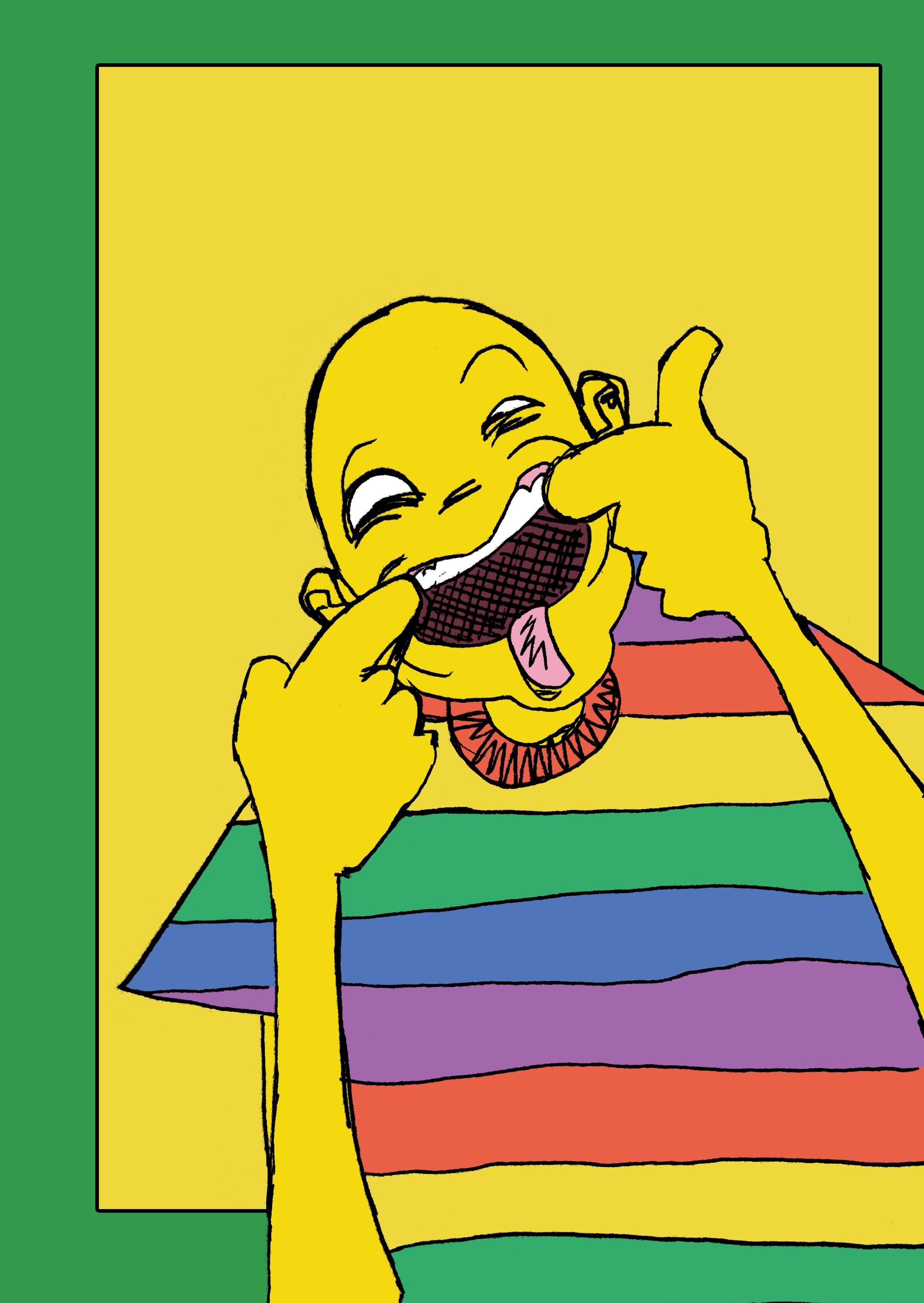
Opinions 53
Design: Jack Stamp
This last summer just gone by, I realised a lifelong dream and got a job as a writer. It’s nothing terribly fancy—the writing is perfunctory website copy, articles on trends in education, social media, and the like—but it’s tangibly closer to my ideals than, say, my prior job working in a call centre. When you take a job as a writer, you do it with an unconscious awareness that you are insulated from the rest of the professional world. No matter what developments may disrupt other sectors and displace workers, you are situated within an ancient profession that cannot exist without that fundamental ‘human’ element. So, with that in mind, what the hell is ChatGPT?
That’s a rhetorical question—feel free to Google the term if you don’t know what it is. For me, it’s the thing which is after my job, and eventually, is going to take it. This is not to say, of course, that I like the displacement of workers from any profession. The idea I am now in an ‘at-risk’ category only captures a portion of the horror that I feel. My inner-boomer has finally found something to latch onto, it seems.
I have a friend who is, quite determinedly, against the world of technology, rarely and exclusively using it where he has no other
option. He walks barefoot as a matter of principle, reads exclusively paper books, and on one occasion, had to be dragged reluctantly down a mountain (by me) to receive antibiotics when it became palpable that marjoram was not curing his stomach parasite. Me and him have, historically, disagreed on virtually everything besides music and travel, but in our more recent conversations, I realise that my worldview is becoming very porous. Most notably on technology, which I firmly believed was going to, somehow, save us from ourselves. The truth is, it is only as benevolent as the people it is entrusted to, and it is entrusted it to capital owners.
A tech-bro is not going to be moved by my pleading that the creative industries rely upon that inextricably ‘human’ component. These are the talentless hacks who thought NFTs were the future of art. Some of the biggest and bro-iest of the bunch have suggested that creatives simply need to ‘refresh their mentality’, and instead become ‘trainers’ for the AI, pumping it full of art that it can plagiarise and dismember into endless ‘new’ creations. Under this framing, it’s their problem they are being displaced, and their privilege to claim the dregs of royalties that the machine may, on occasion, decide to spit out.
Uncanny Arrival of ‘Creative’ AI Words: Stewart Burnett 54
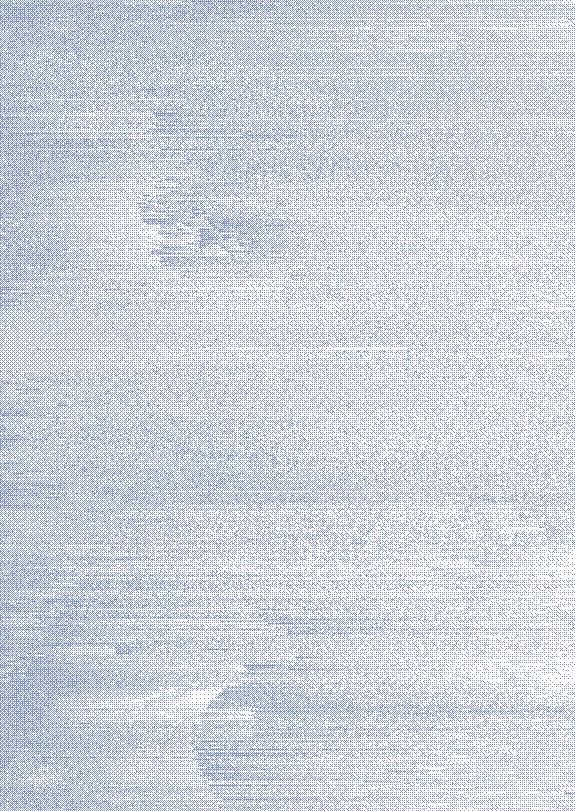
The Uncanny Arrival of ‘Creative’ AI Opinions
Who asked for this nightmare? Who other than the capital owner who stands to save a fraction of a percentage by hiring less creatives? I asked ChatGPT how it felt about taking my job, and here’s what it said:
Chatbots like GPT-3, including ChatGPT, can pose a threat to human writers because they can produce written content at a much faster rate and with a high level of quality. This may lead to decreased job opportunities for writers and editors, as businesses and organizations may turn to automation for cost-effectiveness.
While chatbots like ChatGPT have the potential to streamline the writing process and produce large amounts of content quickly, they can also lead to negative consequences for human writers and the quality of written content. It is important to strike a balance between utilizing the benefits of technology while still valuing and supporting human creativity and sensitivity in the writing process.

Even the bot gets it. Even the bot. The thing ChatGPT misses however, is that our system is fundamentally designed not to value or support the needs of the individual. That’s why
the overwhelming majority of stories you read about AI in the creative sectors make your stomach churn—the uproar over deepfake porn being only the latest in a long line.
I don’t think we’re prepared for how much AI is going to disrupt everything. The sheer number of people who will be displaced cannot be resituated into new jobs— and a threadbare universal basic income (itself a pipe dream) isn’t going to be a sufficient apology. We’re building a future we can’t possibly exist in. Who is going to buy the products hawked endlessly by the algorithm, if the overwhelming majority of people are scraping by, and jobs go only to the most well-connected and narrowly-qualified? Maybe this is latelate-stage capitalism. The one immediately before it, god willing, finally implodes.
If it doesn’t, well, never mind. Us foolish peons who didn’t buy Bitcoin in 2010 will have to find a way.
All of this has drained me, so I am going to play Vampire Survivors. I reckon I can enjoy high scores for a few more years before some Ethereum magnate finds a way to make an arse out of that, too.
Design: Livvie Baird 55
Opinions

Opinions
56
Words: Holly Higgins
Reclaiming Alone Time
In recent times, it’s pretty standard to promote self care and self preservation, but so many of us struggle with tolerating alone time, and there’s almost a stigma about navigating social environments on your lonesome.
The idea of going to dinner alone or shopping alone terrifies many. The thought of even popping into costa by yourself for a pick me up can be intimidating. It could be to do with alone time being a form of escapism and putting ourselves in the presence of others during our sacred hours can feel like we are jeprodisring them. In our everyday lives, we are subjected to the judgement of others constantly, with stares, comments and unspoken social rules and cues haunting us, it’s a scary thought to face this without the moral support of friends or family, especially if you’re at your most vulnerable, eating, anxious and alone.

It’s important to reclaim the concept of alone time, as it is often perceived as being lonely, or experiencing loneliness. If you’re spending a lot of time by yourself, it is relatively normal to be or to feel lonely, however, intentionally spending time with yourself is a different concept as you chose to be alone. The choice is important here.
Isn’t it strange as a society we are terrified to be alone, and often judge someone if we think they’re a lonely person, yet we encourage self care and promote the importance of having a stable relationship with yourself.
It’s another tale of needing to step away from the opinions of others and look at what’s important, maintaining happiness and learning to be comfortable with our own company, further helping us overcome the anxiety of someone seeing us alone and making assumptions about our social circles (which shouldn’t matter!) and us learning not to care. This article is your sign, and your subtle encouragement to live your best life, and own your alone time. If we can get rid of the stigma of loneliness and the idea of needing to constantly rely on others for company and validation, we can all be a lot happier.
Opinions 57
Design: Jillian Mendoza
How close are we to eradicating HIV?
The virus
HIV (human immunodeficiency virus) emerged in Africa in the mid-20th century. A timeline of cases started in 1959, followed by a global surge in numbers from the 1980s.
HIV is highly contagious and can affect anyone, regardless of sexual orientation, race, or gender. The virus is transmitted by contact with blood, semen, or vaginal fluids, or passed from mother to baby. Once it has entered the body, it attacks white blood cells (lymphocytes) which display the CD4 surface marker. After its genetic material has entered a lymphocyte, the virus hijacks the cell’s machinery to replicate itself, killing the lymphocyte as mature virions burst free. These can then infect other lymphocytes and repeat the process.
HIV can be diagnosed with a blood test to measure the viral load, which shows how much of it is in the body. Patients with HIV can be monitored with a routine complete blood count (CBC) which counts the number of live blood cells, including lymphocytes, measuring the extent to which the immune system is being damaged.

If left untreated, a weakened immune system will usually develop into acquired immunodeficiency syndrome (AIDS). The progression to AIDS allows other opportunistic infections to take hold, from pneumonia to infection-driven blindness, cancers, and
dementia. It becomes a systematic failure in every organ system of the body.
The treatment
Thanks to increased interest and funding, current pharmaceutical therapies can stop HIV transmission and prevent its development into AIDS. Such therapies are available on the NHS, and include:
Antiretroviral therapies (ARTs)
• Treatment for those already infected with HIV
• ‘Undetectable=Untransmittable’: ARTs reduce the viral load to an undetectable level, thus preventing the virus being transmitted, even during unprotected sex
• Prevents HIV from escalating to AIDS, so HIV-positive individuals can achieve a normal life expectancy
HIV PReP (pre-exposure prophylaxis)
• Preventative measure taken by those at risk of HIV exposure
• Used daily or ‘on-demand’ a few hours before exposure
• Highly effective at protecting an individual from becoming infected with HIV
HIV PEP (post-exposure prophylaxis)
• Taken after any potential exposure to HIV in the past 72 hours by those not taking PReP
• Usually successful at preventing HIV infection after an exposure event
Science and Technology Words: Mary Tozer 58
There is a push to eliminate HIV using these medicines already available to us. In 2014, UNAIDS set a ’90-90-90’ strategy, aiming for:
• 90% of those with HIV to know their status
• 90% of HIV-positive individuals to receive sustained ART
• 90% of those on ART to achieve undetectable (therefore untransmittable) viral loads
by 2020. 14 countries, including the UK, reached the target; many have not. However, significant progress is ongoing.
The cure
You might have heard of several instances of HIV being cured. Widely reported due to their rarity, these cases usually occur under specific circumstances.

In 2007, the ‘Berlin Patient’ became widely regarded as the first individual to be ‘functionally cured’ of HIV/AIDS. Living with HIV, a further leukaemia diagnosis led to the patient being treated with donated bone marrow stem cells. The donor carried a rare gene for a cell surface receptor which blocks attachment of HIV to human cells. The transplant thus provided an increase in the number of blood cells with the ‘resistance gene’. Over the next 3 years, researchers failed to detect HIV in the patient’s blood, despite discontinuing ART. The patient was effectively cured. At the time, researchers concluded stem cell transplantation was too risky to be performed with the sole purpose of eliminating HIV.
Timothy Ray Brown lifted his anonymity as the Berlin Patient in 2010, stating “I didn’t want to be the only person cured”. In 2019, his leukaemia returned, and he passed away in the autumn of 2020.
This case proved that certain human genes are effective at eliminating HIV. In 2012, another breakthrough was made: the discovery of the CRISPR-Cas gene editing technique, which allows adding and/or removing genes in an organism. This year, Hussein et al. discussed
the potential to use this method in a dual approach by targeting human and viral genes simultaneously to activate an antiviral response and inhibit viral replication.
An HIV vaccine could also be on the horizon. Vaccine research is often slow, but several mechanisms are being investigated, like utilising antibodies which prevent HIV from entering human cells. More than 40 vaccines are currently in development, and a vaccine could come to the market as soon as 2030.
Whilst new treatments pose an exciting prospect, current therapies could be enough on their own to wipe out HIV if used and distributed effectively. Today, HIV infection is manageable, and transmission preventable. This has also gone some way towards minimising the stigma HIV-positive individuals face.
Staying informed on the availability of treatment options is the best way for any individual to protect themselves against HIV infection, but also to aid in the effort against HIV/AIDS and make life easier for those already affected.
Science and Technology 59 Design: Joshua Harris
Harry Anderson
Long forgotten: The secrets of Roman concrete
Architecture is one of the world's most ancient forms of art, with ruins offering a glimpse into the life and cultures of early peoples. In Europe, some of the most prominent examples of surviving architecture include the myriad buildings and structures left behind by the Roman Empire. Despite the (Western) Roman empire falling more than a thousand years ago, Roman bridges and columns remain strong to this day. Even today, Rome’s Pons Fabricius bridge (built in 62 BCE) remains in use despite being almost 2000 years old. How is it that ancient structures like this are still standing, yet more recent constructions fall apart within decades? The answer lies in the concrete.
The secrets of Roman concrete have been exactly that for centuries: a secret. Yet, a team of scientists have recently uncovered exactly




how this concrete can endure centuries of continual use, whilst contemporary concrete crumbles in a fraction of time. Roman concrete differs from its modern counterpart not only in its durability, but in how it becomes stronger over time, as if empowered by the passing of years. The search for the ancient formula began with pozzolana, a recipe consisting of volcanic ash and lime - the calcium-rich mineral, not the fruit. These two ingredients are combined and react with water to create a remarkably strong building material. It was assumed that this mixture was the only source of the concrete’s strength, yet the scientists discovered that when mixed at extremely high temperatures, and using the more reactive quicklime, the resulting mixture boasts substantial strength. Furthermore, with this method, they uncovered the secret of the

Science & Technology
60
Words:
concrete’s seemingly miraculous longevity: white crystalline chunks called “lime clasts” within the concrete.
chunks recrystallize, and thereby heal the damage to the concrete while also improving its strength.
This subject may not seem important, perhaps even appear to be quite bland. Yet, this rediscovery paves the way for architectural innovation and stability in an increasingly unstable world. Stronger concrete means that buildings and other public structures can be built to withstand the test of time, rather than having to be constantly maintained and serviced, saving funds for other projects and public works.
These reactive chunks, absent from modern concrete, easily fracture, but any damage is contained within them, rather than affecting the whole structure. Then, over time, these






“In Europe, some of the most prominent examples of surviving architecture include the myriad buildings and structures left behind by the Roman Empire.”
Science & Technology 61
Design: Ariane Legradi
THE LONG HISTORY OF MENTAL HEALTH
Whilst mental illness is thought of as a modern problem, humanity has faced it throughout history. References to mental health can be found throughout history and across cultures yet differing greatly in how it’s understood and treated. Conceptions of mental health are often cyclical, with ideas and viewpoints shifting to and from progressive or backwards thinking.
The oldest ideas around mental illness can be seen in cave paintings which showed holes that were drilled in people’s skulls to release the “evil spirits,” or what we might now know as mental illness. Ancient Chinese beliefs attributed mental illness to an imbalance of bodily forces, aka Ying and Yang. In ancient Greece Hippocrates believed mental illness was caused by a deficit in certain bodily fluids he called ‘humours’ such as bile and blood. Whilst obviously outdated, he was amongst the first to categorise mental illness, and even argued that those suffering were not to blame, but possessed an unseen illness, an idea even today many struggle to understand.
By the time of the Middle Ages in Europe, Catholic teachings deemed supernatural explanations to become the common answer. Those with mental illness were said to be possessed by demons or cursed. Infamously, many women with mental health problems were persecuted as witches, being tortured and burnt at the stake. Similarly, asylums such as
the infamous “bedlam” in London were opened where the mentally ill would be locked away in horrific conditions and prescribed torturous treatments such as bloodletting. All of this, due to beliefs that the mentally ill were dangerous, and that fear would ‘restore their minds.’
Despite this, throughout the 18th and 19th century more progressive and humanitarian views grew. One famous example is that of the French physician Phillipe Pinel, who rather than using prison-like asylums, gave his patients well-lit open rooms to recover, and freedom to move around the hospital grounds. This was only the start, as the psychiatrist Emil Kraepelin soon after split the singular ‘mental illness’ into the distinct syndromes of manic depression and what we now call schizophrenia. Whilst a small step, to this day it acts as the basis for how mental illnesses are categorised.
Around the same time the field of psychiatry developed and so did treatment as figures dived into psychology. Sigmund Freud was the most famous of whom with his creation of psychoanalysis, the idea that our subconscious influences us, and this was often the cause of mental illness. While Freud’s theories are still controversial, his work was the launch pad for modern psychology and therapy. His theories in psychoanalysis are still used in therapy, and his influence created therapies from cognitive psychology such as CBT.
62 Science & Technology
Words: Matthew Curry
Design: Rachel Middleton
All this progressed further in the 20th century as therapy and medication became the most common treatments, while brutal techniques such as lobotomies and electro-therapy became rare or non-existent. Throughout the late 1980s a diagnosis and categorisation system known as the DSM (diagnostic and statistical manual) was created to diagnose and treat mental illness. This system is changed and updated as we learn more, and as of today we are on the 5th edition of the manual, the DSM-5. However, some psychologists in the 20th and 21st century have argued against this system of categorisation, and that the usage of medication as treatment is not right. Many in this so-called Anti-psychiatry movement argued that mental illness was not simply a biological problem that could be categorised and treated by medication but is more complicated and requires other treatments.

However, despite coming so far through history, there are still massive problems with mental illness. In the last decade there has been a 13% rise in mental health and substance abuse disorders, it is a leading cause of disability, and suicide is the 4th largest killer amongst 15- to 29-year-olds around the world. Whilst a huge problem, it’s less obvious why it has emerged.
Some blame increases in stress and anxiety from social media, whilst many believe that general societal changes are to be blamed, with the speed and scale of change being too much for people to catch up with.
History shows that mental illnesses are not new, unfamiliar, or rare; they have plagued humanity for its entirety, and that it must be taken as seriously as any other illness. Individuals, sometimes iconic names such as Vincent van Gogh, Isaac Newton and Sylvia Plath all suffered and sadly could not get the help they needed when they needed it. For us today getting help is no longer a supernatural endeavour or dodgy pseudoscience. It is something we can all get, and all deserve. Our past shows us not only the importance of mental health, but also that when mental illness affects us we are not, and never were, alone in that struggle.
63 Science & Technology
THE X-CHROMOSOME FILES
Everyone has heard about the X chromosome. The knowledge of the X and Y chromosomes being responsible for our sex has been ingrained in our brains ever since opening a biology book for the first time. But the notion that the X chromosome is responsible for “just” that is not entirely accurate. What is so special about it? After all, it only contains about 5% of the total human genome. How could it possibly have an influence?
The true power locked behind this mysterious X is highlighted in a study conducted by Armin Raznahan and his colleagues. Whilst previously understood that the X chromosome is involved in how the human brain functions, new research has found that it is responsible for the structure of the brain as well. This is seen particularly well in the prefrontal cortex, responsible for social behavior, emotional
expression, and planning. This points to an explanation as to why the X chromosome’s variants are linked to conditions such as autism, where the prefrontal cortex is structured differently. Additionally, it was observed in the study that this influence is amplified in men, compared to women, displaying structural brain differences between the sexes. David Glahn, a professor at Harvard University, pointed out that while there is no evidence suggesting behavioral differences, it is certainly an interesting aspect to think about further.
But how was this study possible? While it has been over a hundred years since the X chromosome’s discovery, the ability to store and process enormous amounts of information, such as genetic information and brain imaging data, has not been around for
that long. Now, thanks to biomedical databases, large human datasets are readily available to researchers. Thanks to the UK Biobank and donations from anonymous participants, a map of the X chromosome’s expression linked to corresponding brain images was created. This combination of data allowed the team to discover the patterns in brain surface area, thickness, and overall volume, changing in accordance with X chromosome’s variations in each individual.
Studies on sex chromosomes have often been overlooked, due in part to the more laborious analysis required. However, with the recent evolution of technology and analytical techniques, alongside the growing focus on neurodevelopment and its importance, the mysteries of the X chromosome might be revealed in the near future.

Science & Technology Words: Oliwia Mruk, Design: Jack Stamp 64
A chilling revolution: The age of Cryo-EM!
Continuation of ‘A game of shadows!’ from Issue 98
The journey of protein structure determination has thus far led us to a time reliant upon X-ray crystallography. But its limitations lead scientists to search for a new technique!
In 1931 the first electron microscope was developed. It produced higher resolution images by firing a beam of electrons which interact with the studied sample, creating images based on these interactions. However, this process possessed its own shortcomings, such as ‘noise’ and random variation of the images. Initially used by microscopists and cytologists, a few pioneers envisioned its uses for structural biology. Finally, in 1981, Jacques Dubochet and Alasdair McDowall added the necessary ‘chilling’ solution to conquer the issues of using electron microscopy (EM) for protein structure determination.

They prepared samples by quickly cooling them on thin layers of water, resulting in clear ice which holds the samples, enabling their visualisation through the clear surface and preventing damage due to mishandling. This tiny addition allowed biologists to see direct images, advancing their studies on protein structures significantly. Yet, noise persisted in the images produced, muddying their clarity.
To combat this, Joachim Frank and Marin van Heel proposed that layering multiple images from the same viewpoint, and thereby producing an ‘average’ one, would reduce the images' noise. Furthermore, the scientists found that by combining many such averages from different perspectives, they could obtain a 3D structure.
Simultaneously, another revolution was taking shape in the 1970s, in the lab of Richard
Henderson. He and his colleagues were attempting to decipher the structure of a bacterial membrane protein - bacteriorhodopsin. To do this, they used the latest addition to their tool kits – the electron microscope. The protein they were studying offered the leeway to master the new Cryo-EM technique. Finally, after more than a decade of effort, the bacteriorhodopsin structure was ready to be presented to the world!
The journey of these various researchers eventually converged into a new era in structural biology- the age of Cryo-EM.
But does the journey end here? Most definitely not, scientists worldwide are always trying to upgrade their tool kits. The cryo-EM era is only a penultimate – one that will kindle a new revolution, which will tap into the potential of AI.
Article to be continued in following issues of The Magdalen Magazine!
Science & Technology 65
Words: Aditi Atmasidha, Design: Katy Blair
ments
Senior Team
Editor-in-Chief Creative Directors
Dani McFawns
Katy Blair
Fiona Howard
Senior Editorial Team
Administration Manager
Ellie Munro
Managing Editors
Bronte Chalmers
Maria Georgieva
Creative Team
Photography Team
Ada Ung
Lucas Ferguson
Maria Touloupa
Social Media
Lewis Elks
Nick Morton
Website Manager
Ivan Amigo
Senior Feature Editor
Rachel Goodman
Illustration Team
Chloe Dickson
D. Pryke Thomas
Gracie Whitehouse
Jack Stamp
Jillian Mendoza
Acknowledge
Section Editors & Publishing
Creative Writing


Georgi Zhechev
Arts & Entertainment Current Affairs
Arrowyn Williams
On/Off Campus
Emma Sturrock
Catriona Pritchard
Lifestyle
Roshni Baillie
Opinions
Cameron Doherty
Science & Technology Publishing
James McLeish
The Magdalen is published by Dundee University Student Association (DUSA).
Cover Illustration Credits
D. Pryke Thomas
Issue #98 Cover is by one of our fantastic illustrators: D. Pryke Thomas. Thank you so much for your hard work! ❤
The Magdalen 1 0 Designers Cupcake Day
On The 8th of April at The Liar
Do you want to join the Magdalen Design Team? Next issue is your best chance to meet other designers to find out what it's like being a part of the team! Plus, celebrate Issue 100 with a free cupcake for all their hard work!

Welcome to the Magdalen Ball Celebrating Issue 100! When and where: Date and time Fri, 21 Apr 2023, 18:30 BST Location Best Western Invercarse Hotel 371 Perth Road Dundee DD2 1PG For more details & to buy tickets scan the QR Code:
Application Open
What is it?
TheMagdalenislookingforanewEditor-in-Chief!
ThisistheleadroleintheproductionoftheMagdalen andyouwilloverseetheentirejourneyofIssues101106.Youwillleadtheeditorialteam,manageadmin duties,workwithDUSAsta ,andhaveanadditionto yourCVlikenoother.
What do I need?
Wewillbelookingforsomeonewithstrongskillsin writingandgrammar,excellentorganisationalskills, leadershipexperience,and,ideally,pasteditorial experience.Anothermust-haveisacan-doattitude and a lot ofmotivation!
How do I apply?
PleasesendaCVandcoverletterdetailingwhy youwouldbethebestfitfortheroleto editor.in.chief@dusamedia.com.
Informal interviews willtakeplaceinApril.
Deadline: 1/4
Editor-in-Chief
@themagdalenmag The Magdalen Magazine with us online! Connect Join our team! If you're a UoD or Abertay student and have a passion for design or writing, we’d love to hear from you! The Magdalen Magazine @themagdalenmag www.themagdalen.co.uk
04 March
Upcoming Events
Herbarium Creative Writing Workshop
Join poet, artist, and lecturer Dr Heather Yeung for an online creative writing workshop, based in Dundee University’s Herbarium.
17 March The Legendary St Patrick’s Day
All-Day Party
Join us at DUSA for 12 hours of live bands, karaoke, and many pints of Guinness to be had!
25 March Student Climate Conference
Head to DUSA’s Air Bar for our Student Climate Conference to voice your views!






















































 Jon Richardson: The Knitwit
Jon Richardson: The Knitwit
















































